Mad Hedge Technology Letter
August 26, 2024
Fiat Lux
Featured Trade:
(LET IT SNOW)
(SNOW), (NVDA)

Mad Hedge Technology Letter
August 26, 2024
Fiat Lux
Featured Trade:
(LET IT SNOW)
(SNOW), (NVDA)

Some might believe that there are no more growth companies out there in the tech sector.
Innovation has been dragging its heels for quite some time.
Shouldn’t we have put someone on Jupiter yet?
Tech is still very much in the software revolution.
Screens and iPads have been the devices that have allowed software companies to print money.
Then came the monopolistic stranglehold of big tech like Google and Amazon that has really crushed the small guy.
However, there is still room to flourish for smaller companies that are punching above its weight like Snowflake (SNOW), a software company, renowned for its data cloud platform which houses a global network designed to maximize its cloud potential.
This platform allows thousands of organizations to manage their data concurrently, providing both scale and performance.
Snowflake’s unique platform allows thousands of organizations to manage their data with extensive storage and computing power.
Key features of the platform include data storage, processing, and analytic solutions that run faster than traditional systems.
SNOW disappointed in its sales outlook which is why the stock cratered in the short-term, but I do believe this is a buy-the-dip opportunity for the objective investor.
It assured investors that results weren't affected by AT&T's recent data breach or the Crowdstrike outage.
Deceleration is never a term shareholders want to hear from a public company.
The reason for the slowdown is that other companies are beginning to pull back their budgets.
Snowflake’s data warehouse also competes with platforms operated by larger technology giants such as Amazon’s (AMZN) Redshift and Alphabet’s (GOOGL) BigQuery.
These companies could challenge Snowflake’s unique usage-based pricing model as compared to traditional subscription-based pricing.
Lastly, the company still has not turned profitable, leading investors to question the sustainability of the company’s business model.
The company is actively expanding its capabilities in new ways.
Snowflake has developed its own Large Language Model (LLM) called Arctic, which has outperformed other LLM models in various benchmarks, such as Meta Platforms’s (META) Llama.
Furthermore, the company is also enhancing its capabilities through a strategic partnership with Nvidia (NVDA) which aims to provide its customers with a platform designed to boost AI productivity, thereby enhancing business performance.
These 10 new features will provide new revenue streams and more users, re-accelerating Snowflake’s year-on-year revenue growth.
Snowflake’s focus on ramping up its AI offerings displays its commitment to maintaining its leadership in the data warehousing sector.
I do believe that SNOW is worth a look.
It’s true that competition will be a rough ride with the likes of big tech looking to outmuscle SNOW.
That is a serious risk to the long-term viability of the business model and I am not downplaying this risk.
At a $40 billion market cap, the stock definitely screams small company.
However, I do believe there is more room to run to the upside, but the growth is definitely limited.
I think at $115 per share, it is worth a trade and the next pop would be a great time to take profits.
Much of the rate hikes have been discounted into the price of shares so I do believe they will need to show us more than just give them the benefit of the doubt.

Global Market Comments
March 18, 2024
Fiat Lux
Featured Trade:
(MARKET OUTLOOK FOR THE WEEK AHEAD, or THE BIG ROTATION IS ON),
(SNOW), (FCX), (XOM), (TLT), (ALB), (NVDA), (MSFT), (AAPL), (META), (GOOGL), (GOLD), (WPM), (UNP) (FDX), (UNG)

Here is the only statistic you need to know right now.
If NVIDIA (NVDA) continues growing at the same rate it has for the last year it will be larger than the entire global economy by 2030, about $100 trillion, up from the current $2 trillion.
Which suggests that it might not actually achieve that lofty goal. Others have reached the same conclusion as I and the stock held up remarkably well in the face of absolutely massive profit-taking last week.
I have been through past market cycles when other stocks seemed to want to go to infinity. There was Apple (AAPL) in the 1980s which went ballistic, then died, was reborn, and then went ballistic again. It is now capped out at a $2.7 trillion market valuation.
Then we all had a great time trading Tesla, which exploded from a split-adjusted $2.35 to $424 and now seems mired in one of its periodic 80% corrections. But mark my word, it is headed to $1,000 someday, taking it up to a $3.2 trillion valuation.
So if NVIDIA isn’t going to $100 trillion what else should be buying right now?
The answer has been apparent in the market for the past two weeks. Interest rate-sensitive commodities have been on a tear, rising 15%-20% across the board. Investors have been using expensive stocks like (NVDA), (MSFT), (AAPL), (META), and (GOOGL) as ATMs to fund purchases of cheap stocks which in some cases have not moved for years.
It really has been an across-the-board move with money pouring into the entire interest rate-sensitive sectors, including copper (FCX), gold (GOLD), silver (WPM), lithium (ALB), Aluminum (AA), and energy (XOM).
It has spread to other economically sensitive stocks like Union Pacific (UNP) and FedEx (FDX). There seems to be an American economic recovery underway, and the bull market is broadening out. The good news is that it’s not too late to get involved.
A lot of it is investor psychology. Investors fear looking stupid more than they fear losing money. If you buy NVIDIA here on top of a one-year tripling and it tanks you will look like an idiot. If you buy commodities here and they grind up for the rest of 2024 you will look like a genius.
While many of you got slaughtered by the collapse of natural gas this winter, with (UNG) cratering from $32 down to a lowly $15, there is in fact a silver lining to this cloud. Cheap energy costs are now permeating throughout the entire global economy and are filtering down to the bottom lines of companies, municipalities, and even governments.
This has been made possible by the growth of US natural gas production from 1 trillion MM BTUs to 7.5 trillion in just the past ten years. The US is now the largest gas and oil producer in the world by a large margin. Replacing Russia as Europe’s largest energy source in just a year was thought impossible and is now a fact and is also enabling the Continent to stand up to Russian Aggression.
There is hope after all.
One question I constantly received during last week’s Mad Hedge Traders & Investors Summit was “When will Tesla (TSLA) shares bottom? The answer is a very firm “Not yet!”
I have been trading the shares of Elon Musk’s creation for 15 years and can tell you that big surges in the stock always precede major generational changes at the company.
We had a nice run from my $2.35 split-adjusted cost when the first Model S came out (I got chassis number 125 off the assembly line), replacing the toy-like two-seat Tesla Roadster, which was built on a cute little Lotus Elise body from England.
The next big run came with the advent of the much cheaper Model 3 in 2017. The ballistic melt up to $424 began with the launch of the small SUV Model Y in 2020, now the biggest-selling car in the world. All we needed was for Elon Musk to sell $10 billion worth of his own stock by early 2022 to put the final top in.
Which raises the question of when the next major generational change at Tesla. That would be the introduction of the $25,000 Model 2 in 2025. Since everything at Tesla happens late (Elon uses deadlines to flog his staff), it better count on late 2025. That means you should start scaling in around the summer. I am already running the numbers on call spreads and LEAPS now.
Can it fall more in the meantime? Absolutely. $150 a share looks like a chip shot. But to only focus on the EV business, which will account for a mere 10% of Tesla’s final total profits, is to miss Elon’s long-term grand vision of a carbon-free world.
Tesla is in the process of becoming the largest electric power utility in the US, eventually providing charging for 150 million cars. It is taking over the car insurance business. My own premiums on my Model X have plunged by 90%.
It's on the way to becoming the world’s largest processor and recycler of lithium. Tesla has a massive large-scale power storage business that no one knows about.
I fully expect Tesla to become the world’s largest company in a decade. Tesla at $1,000 a share here we come. And while the car business may be slow to turn around, the ingredients that go into the cars, like copper (FCX), Aluminum (AA), and lithium (ALB) are starting to move now.
In February we closed up +7.42%. So far in March, we are up +1.34%. My 2024 year-to-date performance is at +4.48%. The S&P 500 (SPY) is up +6.92% so far in 2024. My trailing one-year return reached +48.70% versus +27.25% for the S&P 500.
That brings my 16-year total return to +681.11%. My average annualized return has recovered to +51.40%.
Some 63 of my 70 round trips were profitable in 2023. Some 11 of 19 trades have been profitable so far in 2024.
I stopped out of my position in Snowflake (SNOW) for a small loss figuring that the tech rally’s days may be number after the most heroic move in history. I then rotated the money into new longs in Freeport McMoRan (FCX) and ExxonMobile (XOM). I also took profits on my short in bonds (TLT) after a $3.50 point dive there. I am maintaining a long in (TLT). I am 70% in cash and am looking for new commodity plays to pile into.
CPI Comes in Hot at 0.4% in February. YOY inflation crawled up to 3.2% to 3.1% expected. Higher shelter and gasoline prices are to blame. Bonds tank as interest rate cuts get pushed back. So do stocks. The market was ripe for a correction anyway.
PPI Comes in Hotter than Hot, at 0.6%. That was higher than the 0.3% forecast from Dow Jones and comes after a 0.3% increase in January. Stocks dipped for two minutes and then rocketed back up. Bad news is good news. Go figure.
Weekly Jobless Claims Dip, to 209,000 to an expected 218,000, and down 1,000 from the previous week. It’s a go-nowhere number.
Next-Generation Boeing Delayed Until 2027, says Delta Airlines, a major customer. The 737-10, Boeing's biggest Max plane with a maximum seating capacity of 230 passengers, is pending certification by the U.S. Federal Aviation Administration (FAA). Expect a hard look. Buy (BA) on the next meltdown.
BYD Launches its $12,500 Car, the Model e2 Hatchback, firing another shot across Tesla’s Bow. The EV will initially be available only in China, Tesla’s biggest market, and then in emerging countries without vehicle standards. Don’t expect to see them in the US.
Toyota Agrees to Biggest Wage Hike in 25 Years. Toyota, the world's biggest carmaker and traditionally a bellwether of the annual talks, said it agreed to the demands of monthly pay increases of as much as 28,440 yen ($193) and record bonus payments. Is the Bank of Japan about to raise interest rates? Is the Japanese yen about to rocket?
Inverted What? Economists are going up on the Inverted Yield Curve as a recession indicator. Short-term interest rates have been higher than long-term ones for two years now, but the recession never showed. Relying on obsolete data analysis can be fatal to your wealth.
My Ten -Year View
When we come out the other side of the recession, we will be perfectly poised to launch into my new American Golden Age or the next Roaring Twenties. The economy decarbonizing and technology hyper accelerating, creating enormous investment opportunities. The Dow Average will rise by 800% to 240,000 or more in the coming decade. The new America will be far more efficient and profitable than the old.
Dow 240,000 here we come!
On Monday, March 18, at 7:00 AM EST, the NAHB Housing Index is announced.
On Tuesday, March 19 at 8:30 AM, Housing Starts for February are released.
On Wednesday, March 20 at 11:00 AM, the Federal Reserve Interest rate decision is published
On Thursday, March 21 at 8:30 AM, the Weekly Jobless Claims are announced.
On Friday, March 15 At 2:00 PM, the Baker Hughes Rig Count is printed.
As for me, with all of the hoopla over the Oppenheimer movie winning six Academy Awards, including one for best picture, I thought I’d recall my own experience with the nuclear establishment buried in my long and distant past.
If you were good at math there were only two career choices during the early 1970s: teaching math or working for the Dept of Defense. Since I was sick of university after six years, I chose the latter.
That decision sent me down a long bumpy, dusty road in Mercury Nevada headed for the Nuclear Test Site. There was no sign. You could only find the turnoff from US Highway 95 marked by four trailers owned by the nearest hookers to the top-secret base.
Oppenheimer himself had died three years earlier, a victim of throat cancer induced by the chain-smoking of Luck Strikes that was common in those days. But everyone on the base knew him as they had all worked on the Manhattan Project when they were young men. They worshiped him like a god.
I did meet Edward Teller, who argued in the movie that the atomic bomb was a waste of time because his design of a hydrogen bomb was 100 times more powerful. The problem was that there was no target big enough to justify a bomb of that size (there still isn’t).
As I watched the film with my kids, now junior scientists in their own right, I kept pointing out “I knew him,” except they were gnarly old and white-haired by the time I met them. Of course, they are all gone now.
My memories of the Nuclear Test Site were never to ask questions, my visit to the Glass Desert where the sand had been turned into glass by above-ground tests in the fifties, and skinny dipping with the female staff in the small swimming pool at midnight.
The MPs were pissed.
With the signing of the SALT I Treaty in 1972, underground testing moved to computer models and I lost my job. So I was sent to Hiroshima to interview survivors and write a 30-year after-action report. These were some of the most cheerful people I ever met. If an atomic bomb can’t kill you, then nothing can.
When the Cold War ended in 1992, the United States judiciously stepped in and bought the collapsing Soviet Union’s entire uranium and plutonium supply.
For good measure, my hedge fund client George Soros provided a $50 million grant to hire every unemployed Soviet nuclear engineer. The fear then was that starving scientists would go to work for Libya, Iraq, North Korea, or Pakistan, which all had active nuclear programs. They ended up in the US instead.
That provided the fuel to run all US nuclear power plants and warships for 20 years. That fuel has now run out and chances of a resupply from Russia are zero. The Department of Defense attempted to reopen our last plutonium factory in Amarillo, Texas, a legacy of the Johnson administration.
But the facilities were deemed too old and out of date, and it is cheaper to build a new factory from scratch anyway. What better place to do so than Los Alamos, which has the greatest concentration of nuclear expertise in the world.
Los Alamos is a funny sort of place. It sits at 7,320 feet on a mesa on the edge of an ancient volcano so if things go wrong, they won’t blow up the rest of the state. The homes are mid-century modern built when defense budgets were essentially unlimited. As a prime target in a nuclear war, there are said to be miles of secret underground tunnels hacked out of solid rock.
You need to bring a Geiger counter to garage sales because sometimes interesting items are work castaways. A friend almost bought a cool coffee table which turned out to be part of an old cyclotron. And for a town designing the instruments to bring on the possible end of the world, it seems to have an abnormal number of churches. They’re everywhere.
I have hundreds of stories from the old nuclear days passed down from those who worked for J. Robert Oppenheimer and General Leslie Groves, who ran the Manhattan Project in the early 1940s. They were young mathematicians, physicists, and engineers at the time, in their 20’s and 30’s, who later became my university professors. The A-bomb was the most important event of their lives.
Unfortunately, I couldn’t relay this precious unwritten history to anyone without a security clearance. So, it stayed buried with me for a half century, until now.
Some 1,200 engineers will be hired for the first phase of the new plutonium plant, which I got a chance to see. That will create challenges for a town of 13,000 where existing housing shortages already force interns and graduate students to live in tents. It gets cold at night and dropped to 13 degrees F when I was there.
I was allowed to visit the Trinity site at the White Sands Missile Test Range, the first visitor to do so in many years. This is where the first atomic bomb was exploded on July 16, 1945. The 20-kiloton explosion set off burglar alarms for 200 miles and was double to ten times the expected yield.
Enormous targets hundreds of yards away were thrown about like toys (they are still there). Some scientists thought the bomb might ignite the atmosphere and destroy the world but they went ahead anyway because so much money had been spent, 3% of US GDP for four years. Of the original 100-foot tower, only a tiny stump of concrete is left (picture below).
With the other visitors, there was a carnival atmosphere as people worked so hard to get there. My Army escort never left me out of their sight. Some 79 years after the explosion, the background radiation was ten times normal, so I couldn’t stay more than an hour.
Needless to say, that makes uranium plays like Cameco (CCJ), NextGen Energy (NXE), Uranium Energy (UEC), and Energy Fuels (UUUU) great long-term plays, as prices will almost certainly rise all of which look cheap. US government demand for uranium and yellow cake, its commercial byproduct, is going to be huge. Uranium is also being touted as a carbon-free energy source needed to replace oil.
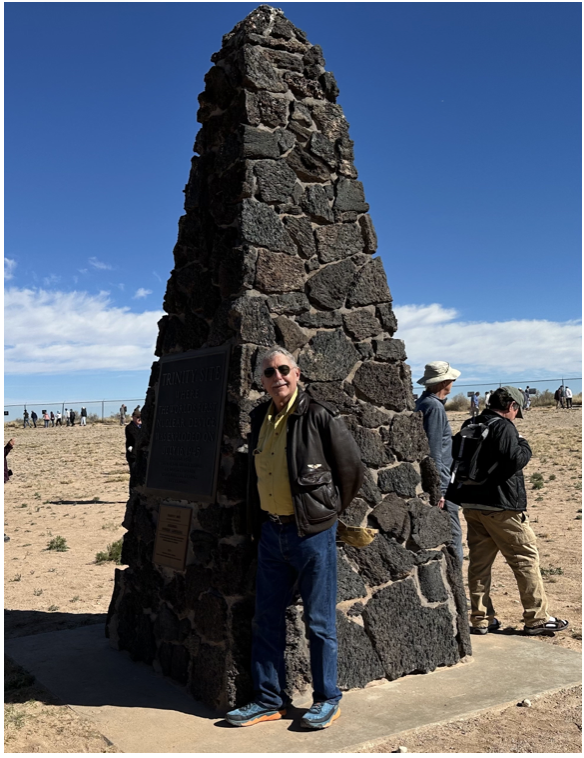
At Ground Zero in 1945
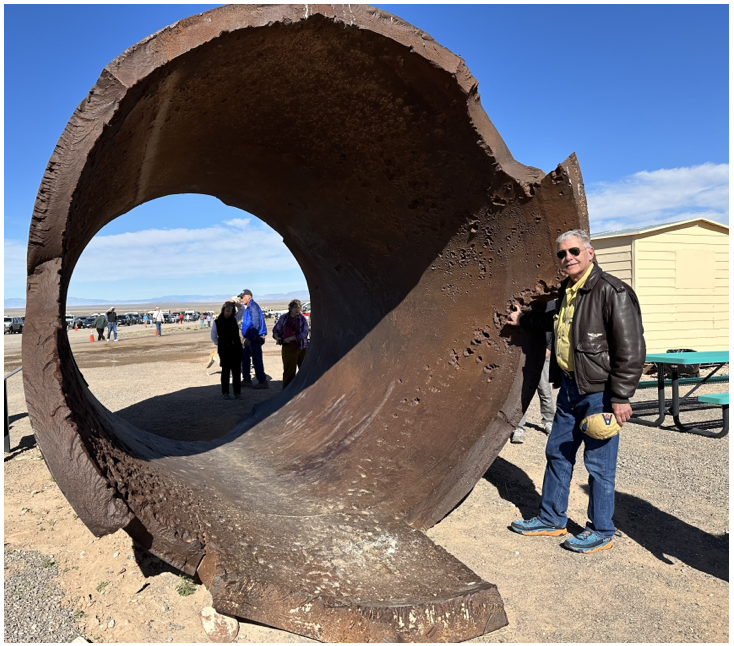
What’s Left of a Trinity Target 200 Yards Out
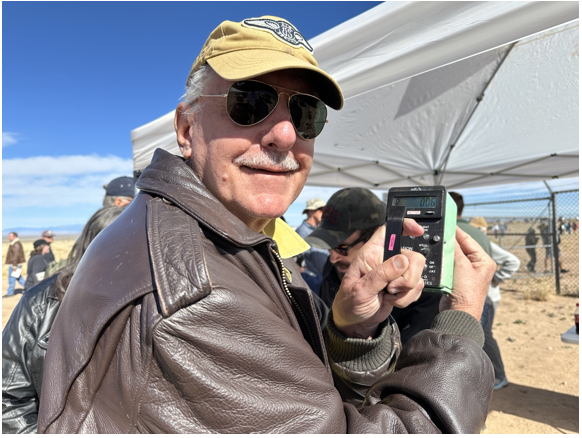
Playing With My Geiger Counter
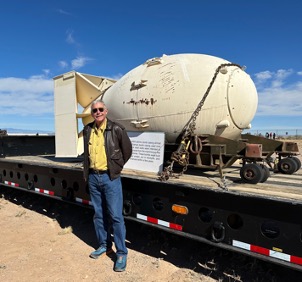
Atomic Bomb No.3 Which was Never Used in Tokyo
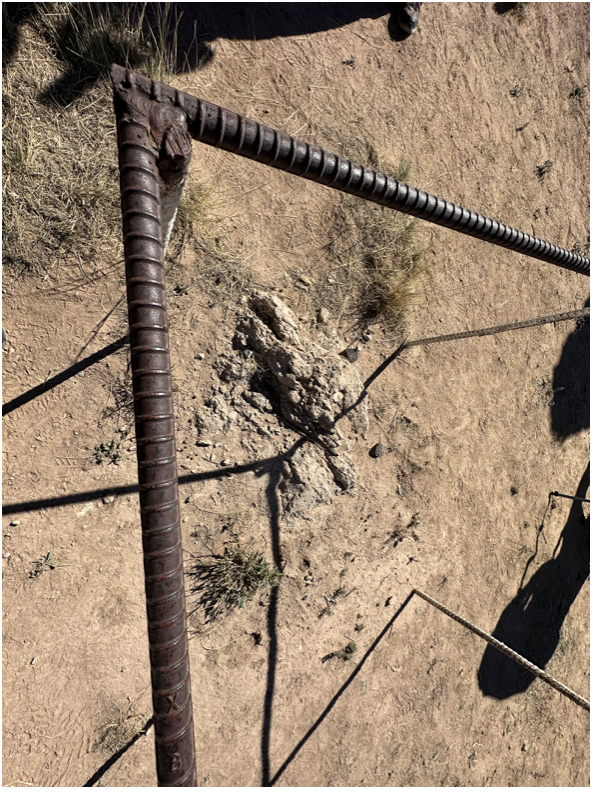
What’s Left from the Original Test
Good Luck and Good Trading,
John Thomas
CEO & Publisher
The Diary of a Mad Hedge Fund Trader
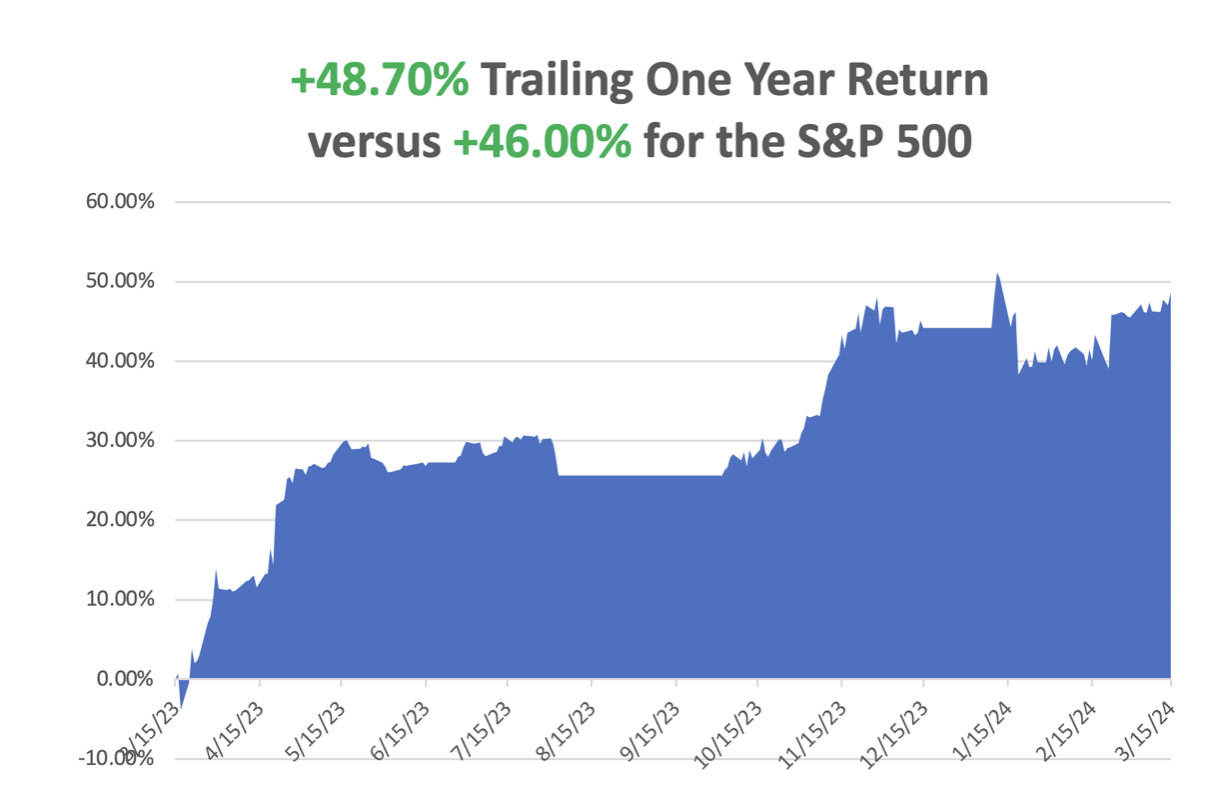
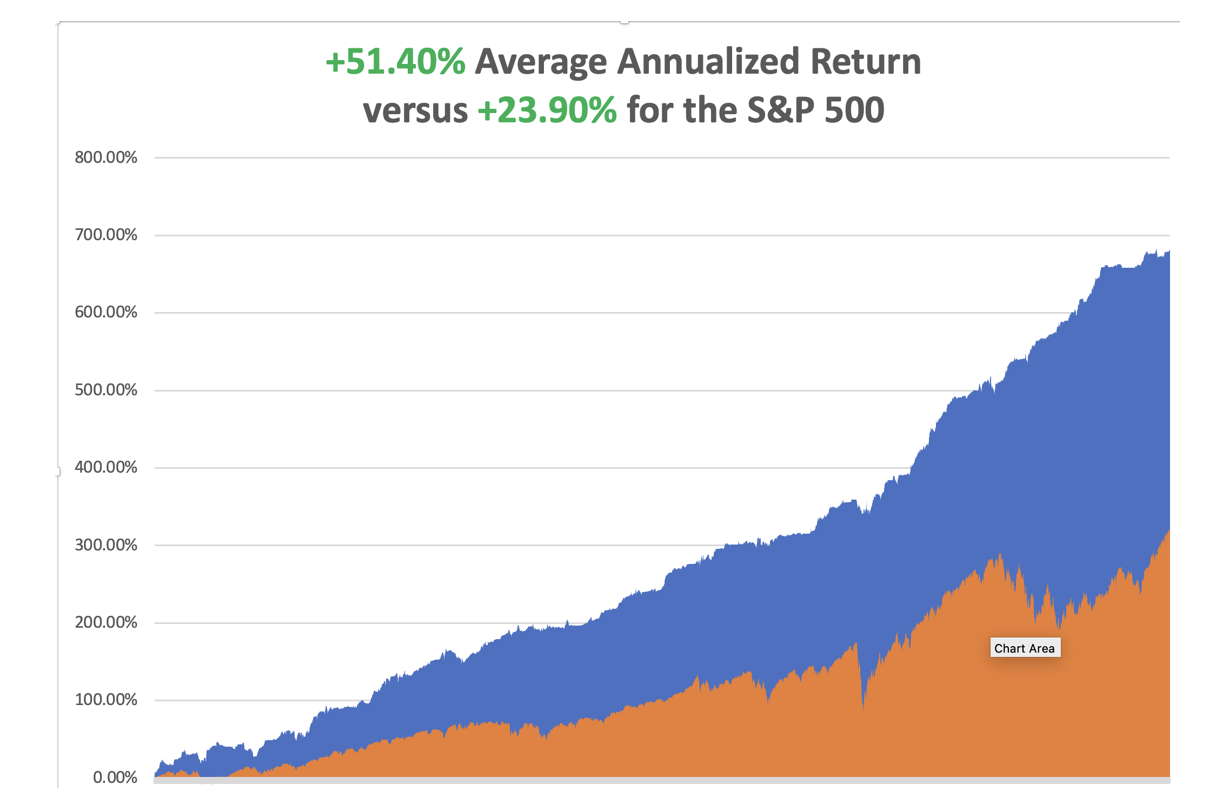

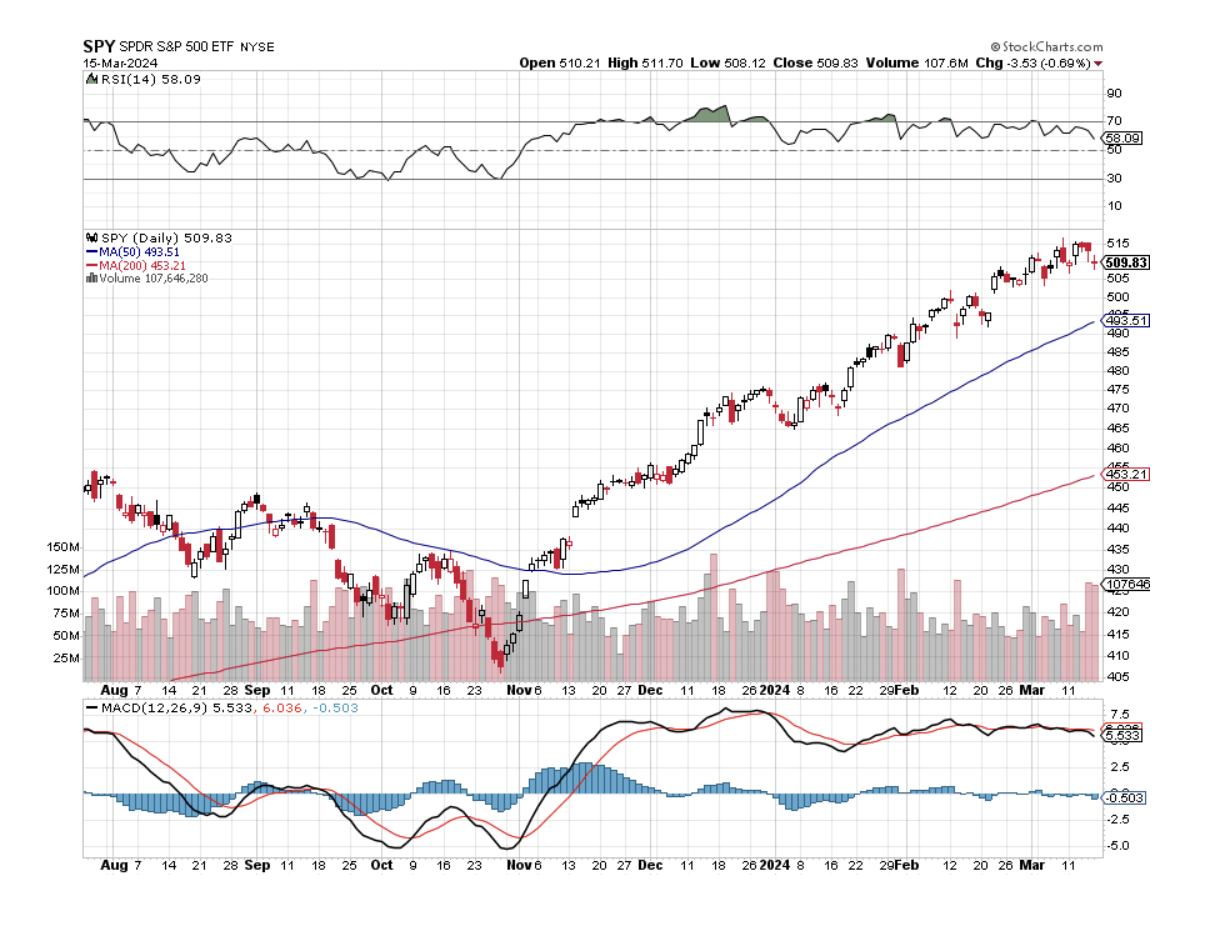
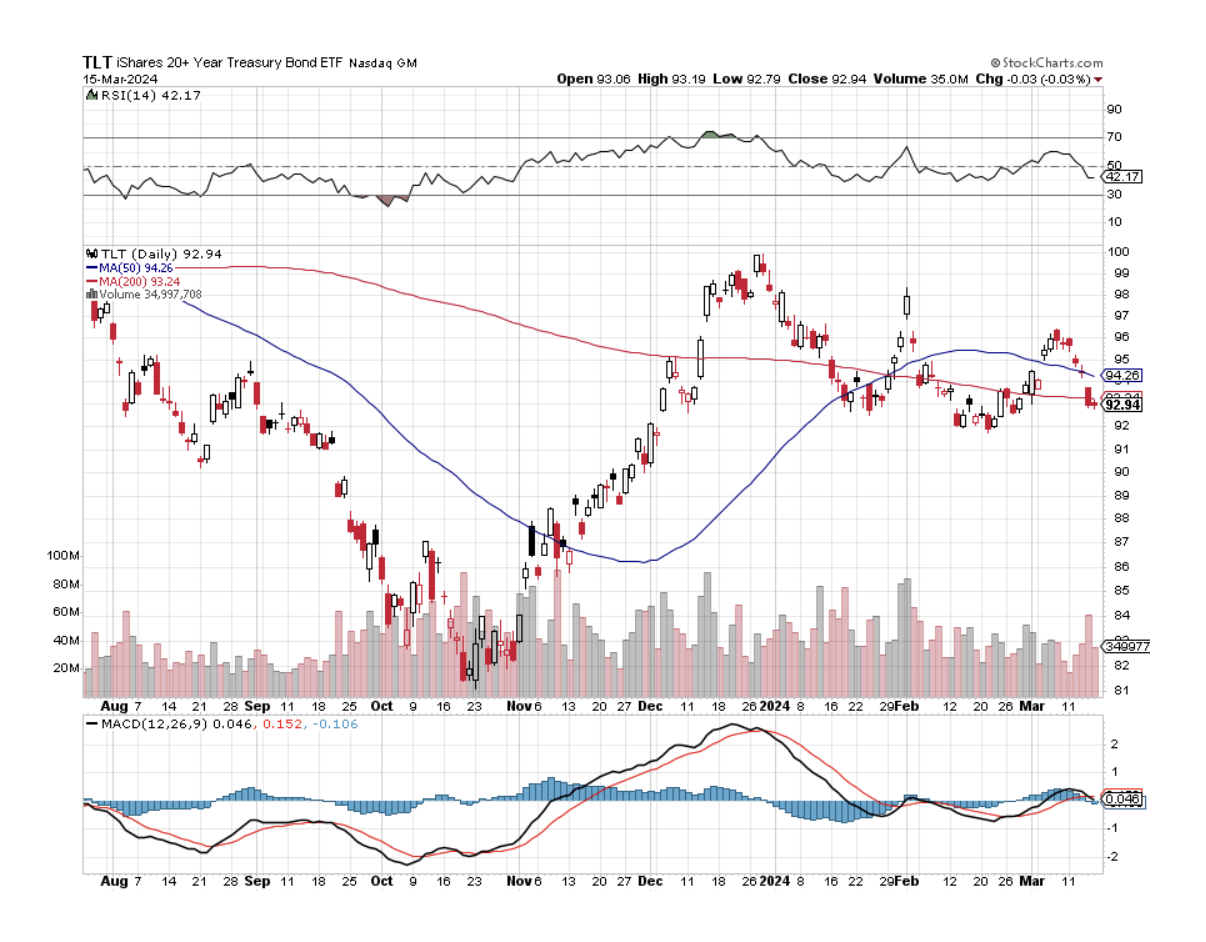

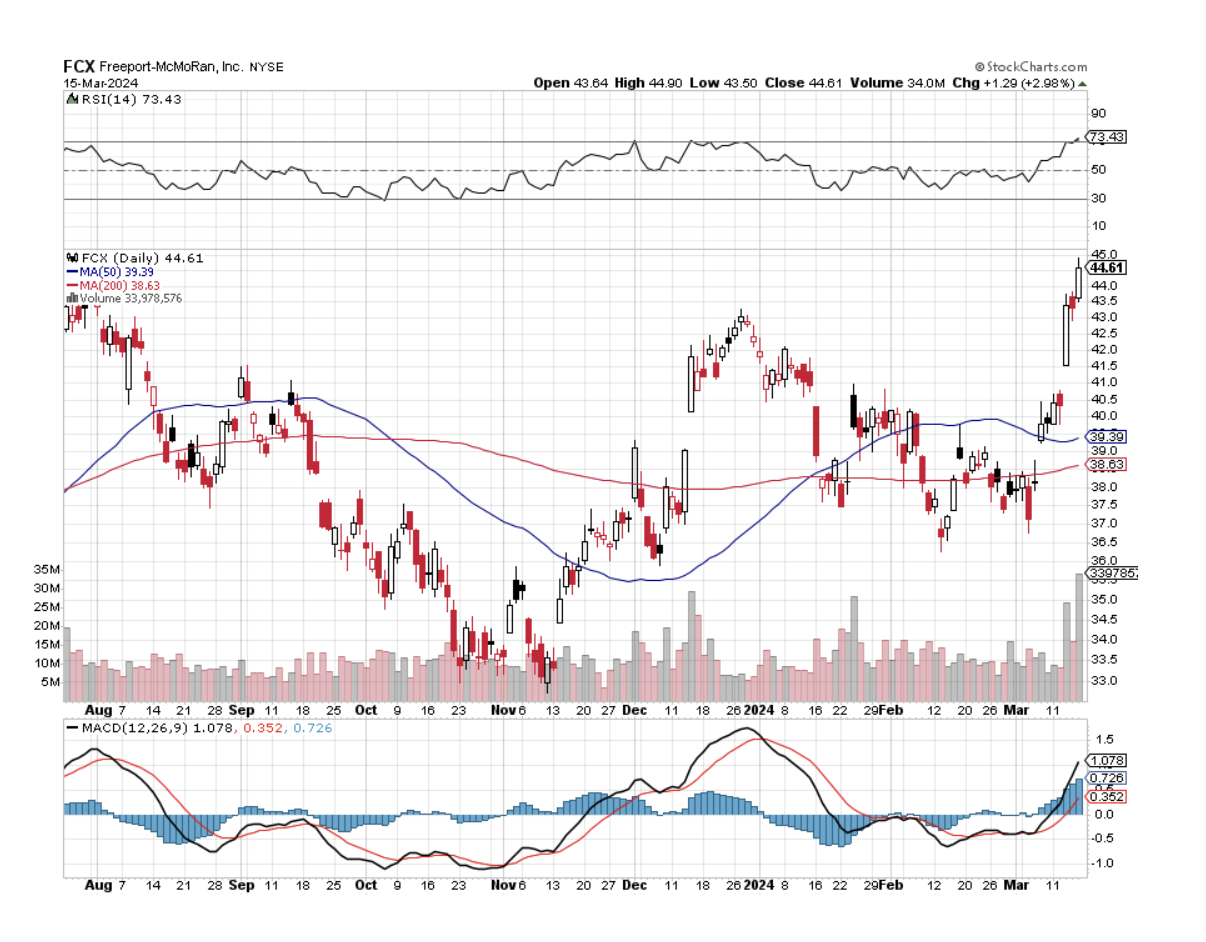
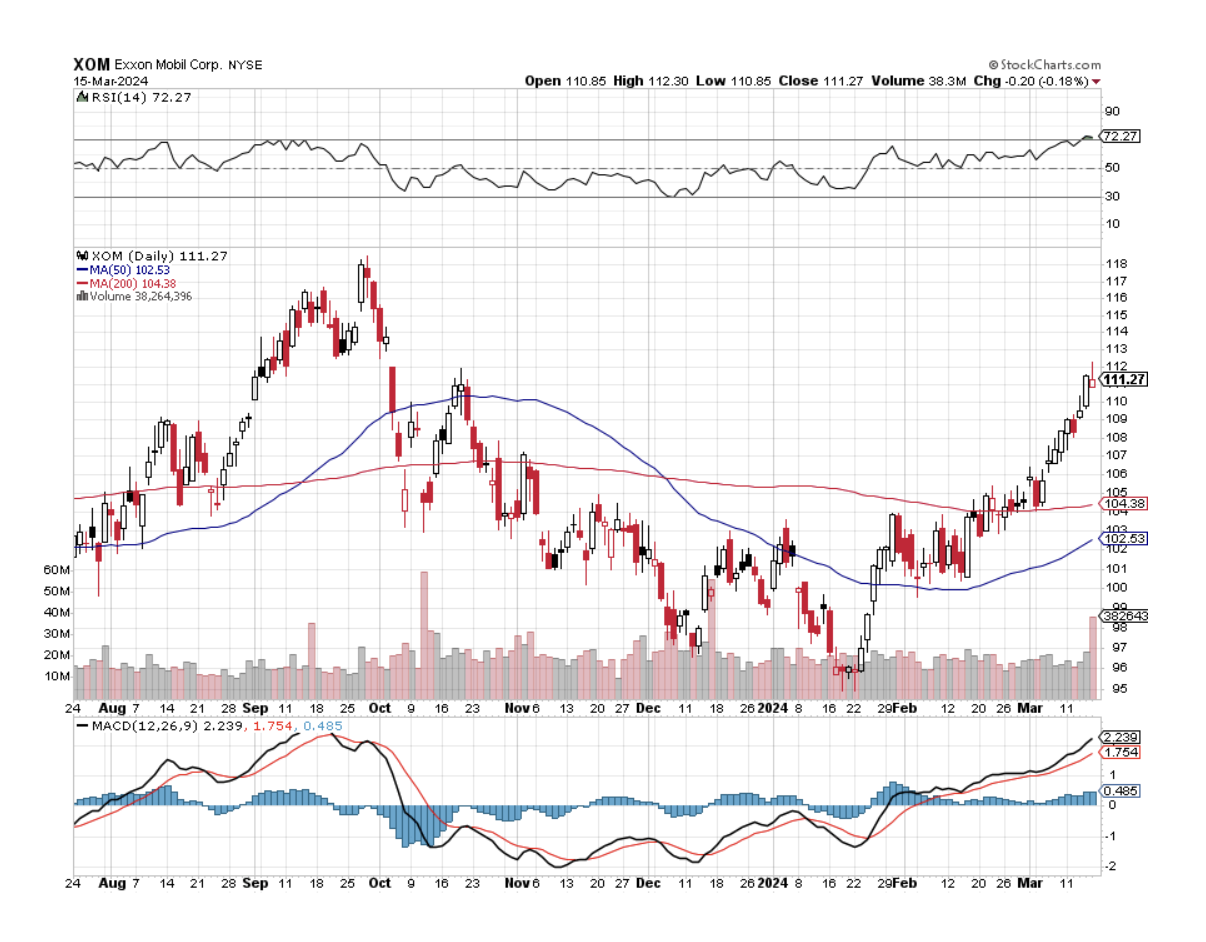
Global Market Comments
March 11, 2024
Fiat Lux
Featured Trade:
(The Mad MARCH traders & Investors Summit is ON!)
(MARKET OUTLOOK FOR THE WEEK AHEAD, or HIGHER HIGHS)
(NVDA), (META), (IWM), (AMZN), (RIVN), (SNOW), (GLD), (GOLD), (NEM), (FXI), DELL), (AAPL), (TSLA), (CCJ), ($NIKK), (USO), (GOLD)

I was all ready to write another hyper-bullish report for the week. That was at least until noon EST on Friday. That’s when NVIDIA (NVDA) Peaked at $955 and then free fell $100 to $855. New all-time and then a new intraday low on huge volume and that is the textbook definition of a market top.
Not that we should be complaining. At the high, (NVDA) was up an unimaginable 105% so far this year. I spent my week buying back short put options for 50 cents that I initially sold for $20. With a quarterly quadruple witching due this Friday, anything can happen.
By the end of February, more than half of all analyst 2024 yearend targets were met. The response was a rush to raise yearend targets, triggering the current melt-up.
It always ends in tears.
And I’m about to tell you something that you will absolutely love to hear. Lower interest rates dramatically increase corporate stock buybacks, already set at $1.25 trillion for 2024. That’s because of the lower cost of capital.
What do more share buybacks automatically bring? High stock prices, especially for large positive cash flow companies like big tech.
As much as the permabears hate to admit it, good news really is good news.
With all of the media obsession with NVIDIA (NVDA), my largest holding, and Meta (META), the fact is that the rally is broadening out. More than half of all industrial stocks are trading at all-time highs. Long-forgotten small caps (IWM) are also approaching 2021 all-time highs.
Going into this week managers were either overweight big tech and extremely nervous or out of big tech and kicking themselves. The urge to rotate is strong. But your standby rotation sectors, industrials, biotech, and banking have also seen big moves.
Which brings us to the subject of gold (GLD).
After a tedious one-year sideways consolidation, the barbarous relic blasted out to the upside above $2,200 an ounce, a new all-time high. After soaking up as much gold as they could over the past decade, China and Russia have finally taken the gold market net short, which is why we saw such dramatic price action.
With interest rates in the US soon to fall, the opportunity cost of owning non-yielding gold is about to shrink. That will cut the knees out from under the US dollar prompting a stampede into precious metals and Bitcoin.
Except this time, it’s different.
Gold miners usually outperform the yellow metal by four to one to the upside. Not so this time. Barrick Gold (GOLD) and Newmont Mining (NEM) were barely able to keep pace with the barbarous relic. That’s because inflation has boosted their costs and cut profit margins. After all, they are stock first and gold plays second.
Still, if gold reaches my $3,000 target in 2025 the LEAPS I sent out for (GOLD) last June should easily hit its maximum profit point of 298%.
That other weak dollar play, oil (USO) may not deliver the joys of past cycles and may in fact be trapped in a fairly narrow $60-$80 range. The futures markets are saying that the price of Texas tea will be lower in a year.
The US is now the world’s top oil producer at 13 million barrels/day and that is rising (thanks to enormously generous tax breaks), capping prices. Non-OPEC+ production is increasing, especially from Brazil and Canada. China, the world’s largest oil importer is missing in action. But low inventories, especially at the American Strategic Petroleum Reserve, are preventing a crash as well. Shale production is growing.
Still, even a $20 rally can have a dramatic impact on the share prices of the big US producers, like Exxon (XOM) and Occidental Petroleum (OXY), some 25% of which is now owned by Warren Buffet. Even without some sexy price action, this sector pays some of the highest dividend yields in the markets.
In February we closed up +7.42%. So far in March, we are up +0.70%. My 2024 year-to-date performance is at +3.21%. The S&P 500 (SPY) is up +7.11% so far in 2024. My trailing one-year return reached +54.28% versus +40.94% for the S&P 500.
That brings my 16-year total return to +689.74%. My average annualized return has recovered to +52.05%.
Some 63 of my 70 trades last year were profitable in 2023. Some 11 of 15 trades have been profitable so far in 2024.
I used the ballistic move in (NVDA) to take profits in my double long there. I am maintaining longs in (AMZN) and Snowflake (SNOW). I am both long and short the bond market (TLT) and I am 60% in cash given the elevated level of the stock markets.
Nonfarm Payroll Report Rose 275,000 in February. The Headline Unemployment Rate rose to 3.9%, a two-year high. The report illustrates a labor market that is gradually downshifting, with more moderate job and pay gains that suggest the economy will keep expanding without much risk of a reacceleration in inflation. These are very Fed friendly numbers.
JOLTS Job Openings Report Rises by 140,000 to 8,890,000, less than expected. Leisure and hospitality led with 41,000 new jobs, construction added 28,000 and trade, transportation and utilities contributed 24,000. Growth was concentrated among larger companies, as establishments with fewer than 50 employees contributed just 13,000 to the total.
Rivian Shares Soar, on news it is halting plans to build a new $2.25 billion factory in Georgia, an abrupt reversal aimed at cutting costs while the company prepares to launch a cheaper electric vehicle. Shifting planned production of the forthcoming R2 model to an existing facility in Illinois will allow Rivian to begin deliveries in the first half of 2026, earlier than expected. Buy (RIVN) on dips.
New York Community Bancorp Bailed Out, with a cash infusion led by former Treasury secretary Steve Mnuchin. The shares soared from $2 to $3.41. That takes the heat off the sector….until the next one. The US is shrinking from 4236 banks to only six banks. Who says politics doesn’t pay?
Europe Moves Towards Interest Rate Cuts, igniting a global bond market rally. Staff projections now see economic growth of 0.6% in 2024, from a previous forecast of 0.8%. They presented a more positive picture of inflation, with the forecast for the year brought to an average 2.3% from 2.7%. Market bets increased on rate cuts taking place as early as June, with the euro trading 0.35% lower against the British pound following the news.
Beige Book Comes in Moderate, saying "labor market tightness eased further," in February but noted "difficulties persisted attracting workers for highly skilled positions." The Beige Book is a review of economic conditions across all 12 Fed districts. Fed Chair Jerome Powell told Congress on Wednesday that the U.S central bank expected "inflation to come down, the economy to keep growing," but shied away from committing to any timetable for interest rate cuts.
China Targets 5% Growth for 2024, but nobody buys it for a second. A covid hangover, residential real estate crisis triggering a financial crisis, and constant invasion threats over Taiwan, make this target a pipe dream. Avoid (FXI) and all Middle Kingdom plays.
Gold Hits New All-Time High, at $2,141 an ounce on expectations of imminent rate cuts by the Fed. Gold, often used as a safe store of value during times of political and financial uncertainty, has climbed over $300 dollars since the start of the Israel-Hamas war. Buy (GLD), (GOLD), and (NEM) on dips.
Dell (DELL) Becomes an AI Stock, sending the shares up 47% in a Day. That’s been changing over the past year, as Dell has been reporting strong orders of servers designed to power generative AI workloads—many of which use chips supplied by AI kingmaker Nvidia. The company’s fourth quarter results convinced any doubters. Can Apple (AAPL) do the same?
Tesla Plunges on Poor China Sales, down $14.50 on sales data dimmed the outlook for Tesla's global deliveries, at a time when the top EV maker is battling a decline in demand and is weighed down by a lack of entry-level vehicles and the age of its product line-up. Not the time to be in EVs or solar. Buy (TSLA) on bigger dip.
US National Debt is Rising by $1 Trillion Every 100 Days. A trillion here, a trillion there, sooner or later that adds up to a lot of money. Eventually, someone is going to have to do something about this. The US national debt stands at $34.5 trillion, or $104,545 per person.
The Uranium Shortage is Getting Extreme, with yellow cake up 112% in a year. Owners of left-for-dead uranium mines are restarting operations to capitalize on rising demand for the nuclear fuel. Most of those American mines were idled in the aftermath of Fukushima when uranium prices crashed and countries like Germany and Japan initiated plans to phase out nuclear reactors. Now, with governments turning to nuclear power to meet emissions targets and top uranium producers struggling to satisfy demand, prices of the silvery-white metal are surging. Buy (Cameco (CCJ) on dips.
Japan’s Nikkei ($NIKK) Tops 40,000, a new 34-year high. The ultra-weak Japanese economy is giving the economy there a free lunch, but better hedge your currency exposure. Good thing I missed a dead market for 34 years.
NVIDIA Replaces Tesla as Top Traded Stock, with volumes migrating to the options market as well. Blockbuster profits are catnip for traders, while EV price wars aren’t. Tesla is down 52% from its all-time high two years ago and is one of the biggest percentage decliners in the Nasdaq 100 Index this year.
My Ten-Year View
When we come out the other side of the recession, we will be perfectly poised to launch into my new American Golden Age, or the next Roaring Twenties. The economy decarbonizing and technology hyper accelerating, creating enormous investment opportunities. The Dow Average will rise by 800% to 240,000 or more in the coming decade. The new America will be far more efficient and profitable than the old.
Dow 240,000 here we come!
On Monday, March 11 at 7:00 AM EST, the Consumer Inflation Expectations are announced.
On Tuesday, March 12 at 8:30 AM, Inflation Rate for February is released.
On Wednesday, March 13 at 2:00 PM, MBA Mortgage Applications are published
On Thursday, March 14 at 8:30 AM, the Weekly Jobless Claims are announced. We also get the Producer Price Index.
On Friday, March 15 at 2:30 PM, the University of Michigan Consumer Sentiment is published. At 2:00 PM the Baker Hughes Rig Count is printed.
As for me, I have met many interesting people over a half-century of interviews, but it is tough to beat Corporal Hiroshi Onoda of the Japanese Army, the last man to surrender in WWII.
I had heard of Onoda while working as a foreign correspondent in Tokyo. So, I convinced my boss at The Economist magazine in London that it was time to do a special report on the Philippines and interview President Ferdinand Marcos. That accomplished, I headed for Lubang island where Onoda was said to be hiding, taking a launch from the main island of Luzon.
I hiked to the top of the island in the blazing heat, consuming two full army canteens of water (plastic bottles hadn’t been invented yet). No luck. But I had a strange feeling that someone was watching me.
When the Philippines fell in 1945, Onoda’s commanding officer ordered the remaining men to fight on to the last man. Four stayed behind, continuing a 30-year war.
As a massive American military presence and growing international trade raised Philippine standards of living, the locals eventually were able to buy their own guns and kill off Onoda’s companions one by one. By 1972 he was alone, but he kept fighting.
The Japanese government knew about Onoda from the 1950s onward and made every effort to bring him back. They hired search crews, tracking dogs, and even helicopters with loudspeakers, but to no avail. Frustrated, they left a one-year supply of the main Tokyo newspaper and a stockpile of food and returned to Japan. This continued for 20 years.
Onoda read the papers with great interest, believing some parts but distrusting others. His worldview became increasingly bizarre. He learned of the enormous exports of Japanese automobiles to the US, so he concluded that while still at war, the two countries were conducting trade.
But when he came to the classified ads, he found the salaries wildly out of touch with reality. Lowly secretaries were earning an incredible 50,000 yen a year, while a salesman could earn an obscene 200,000 yen.
Before the war, there was one Japanese yen to the US dollar. In the hyperinflation that followed the yen fell to 800, and then only recovered to 360. Onoda took this as proof that all the newspapers were faked by the clueless Americans who had no idea of true Japanese salary levels.
So he kept fighting. By 1974 he had killed 17 Philippino civilians.
After I left Lubang island, a Japanese hippy named Norio Suzuki with long hair, beads, and sandals followed me, also looking for Onoda. Onoda tracked him as he had me but was so shocked by his appearance that he decided not to kill him. The hippy spent two days with Onoda explaining the modern world.
Then Suzuki finally asked the obvious question: what would it take to get Onoda to surrender? Onoda said it was very simple, a direct order from his commanding officer. Suzuki made a beeline straight for the Japanese embassy in Manila and the wheels started turning.
A nationwide search was conducted to find Onoda’s last commanding officer and a doddering 80-year-old was turned up working in an obscure bookstore. Then the government custom-tailored a prewar Imperial Japanese Army uniform and flew him down to the Philippines.
The man gave the order and Onoda handed over his samurai sword and rifle, or at least what was left of it. Rats had eaten most of the wooden parts. You can watch the surrender ceremony by clicking here on YouTube.
When Onoda returned to Japan, he was a sensation. He displayed prewar mannerisms and values like filial piety and emperor worship that had been long forgotten. Emperor Hirohito was still alive.
When I finally interviewed him, Onoda was sympathetic. I had by then been trained in Bushido at karate school and displayed the appropriate level of humility, deference, mannerisms, and reference.
I asked why he didn’t shoot me. He said that after fighting for 30 years he only had a few shells left and wanted to save them for someone more important.
Onoda didn’t last long in the modern Japan, as he could no longer tolerate modern materialism and cold winters. He moved to Brazil to start a school to teach prewar values and survival skills where the weather was similar to that of the Philippines. Onoda died in 2014 at the age of 91. A diet of coconuts and rats had extended his life beyond that of most individuals.
Onoda wasn’t actually the last Japanese to surrender in WWII. I discovered an entire Japanese division in 1975 that had retreated from China into Laos and just blended in with the population. They were prized for their education and hard work and married well.
During the 1990’s a Japanese was discovered in Siberia. He was released locally at the end of the war, got a job, married a Russian woman, and forgot how to speak Japanese. But Onoda was the last to stop fighting.
The Onoda story reminds me of the fact that journalists learn very early in their careers. You can provide all the facts in the world to some people. But if they conflict with their own deeply held beliefs, they won’t buy them for a second.

Hiro Onoda Surrenders

Budding Journalist John Thomas
Good Luck and Good Trading,
John Thomas
CEO & Publisher
The Diary of a Mad Hedge Fund Trader
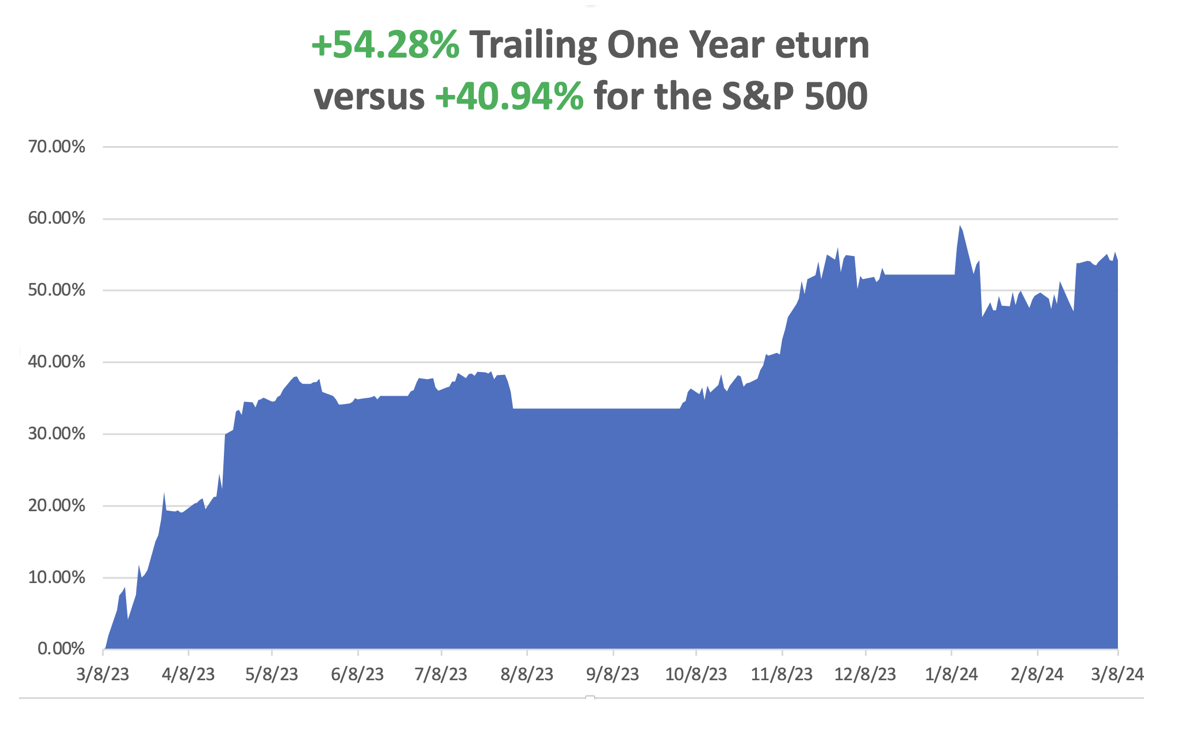
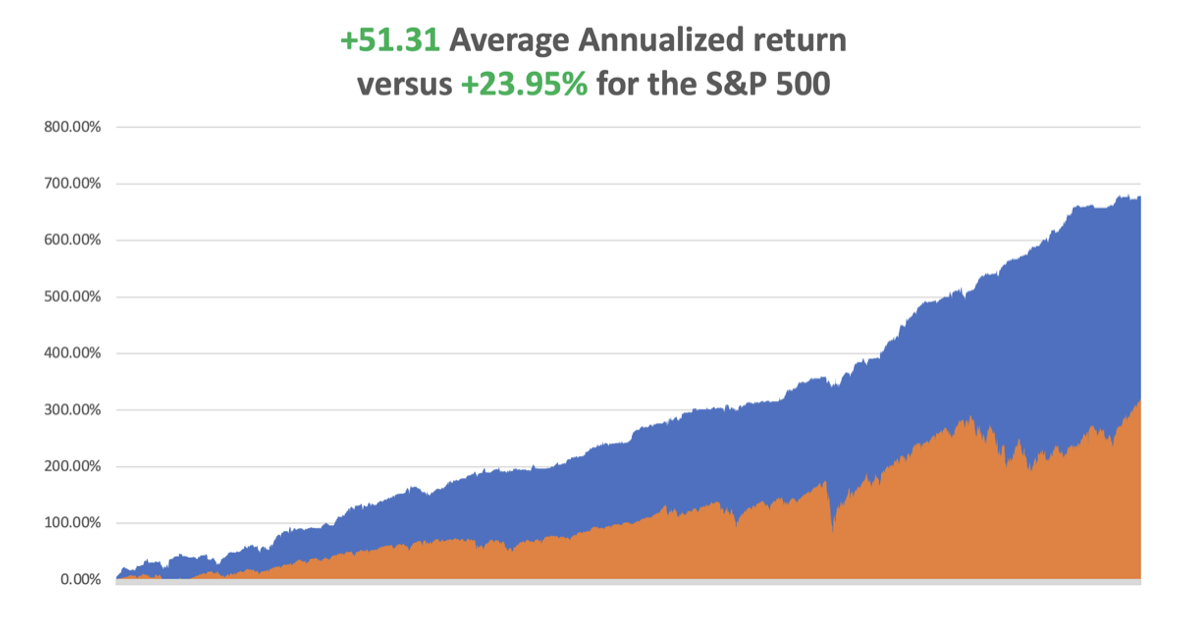
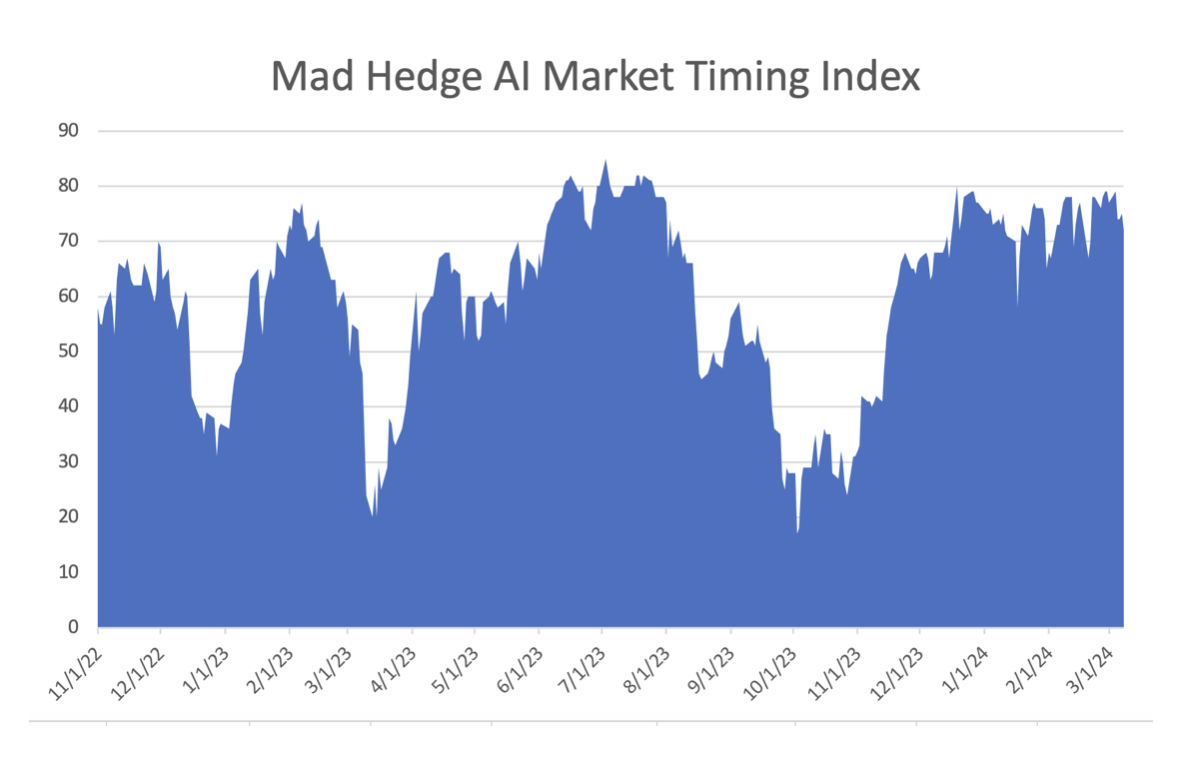
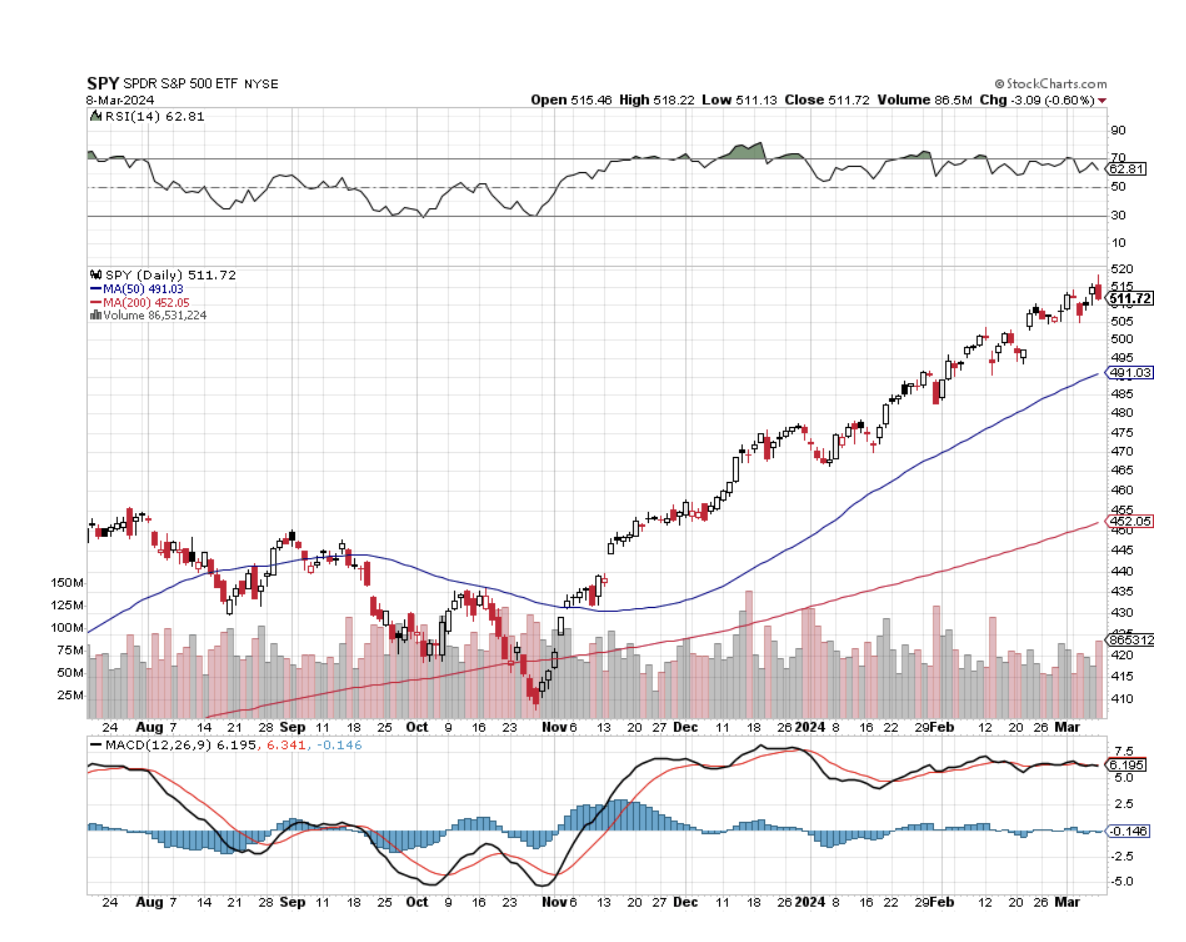
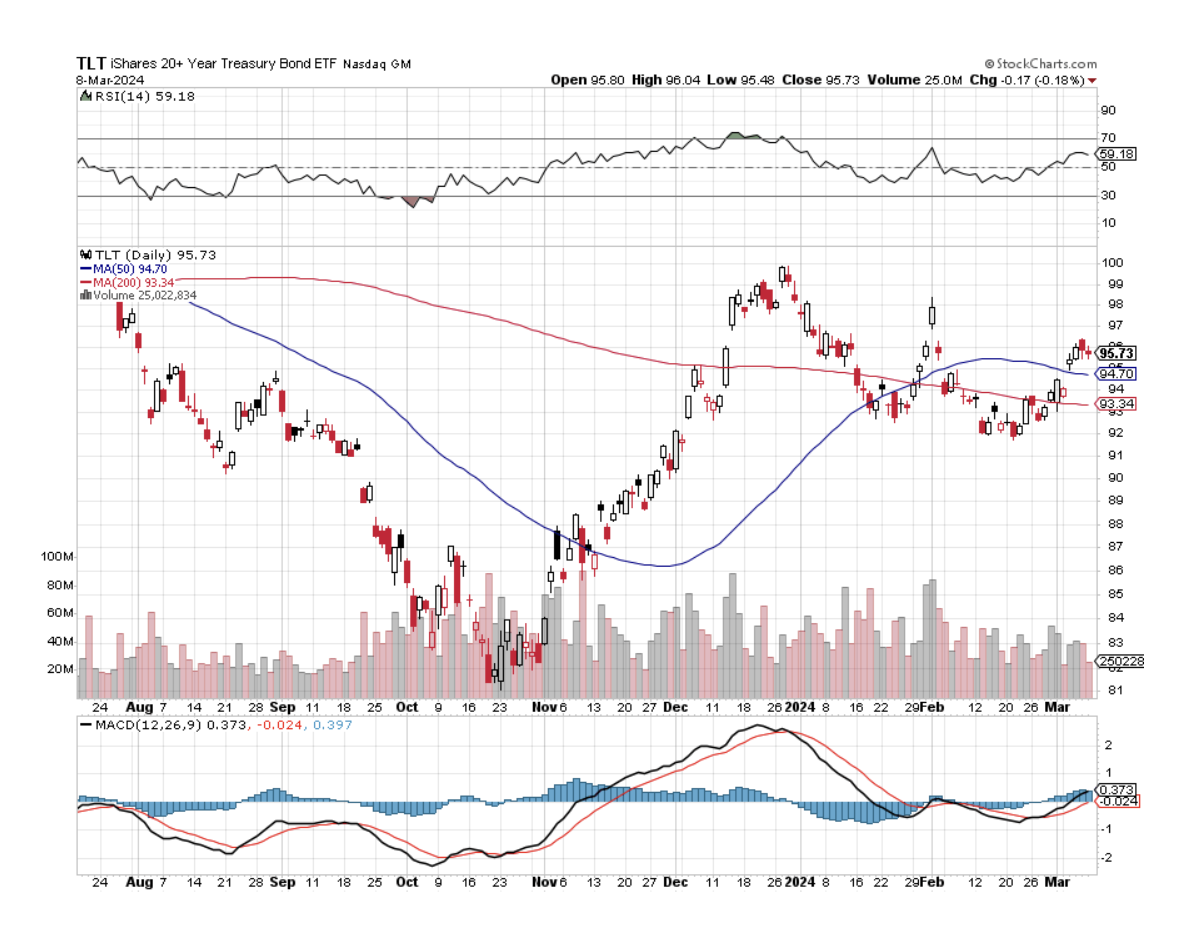
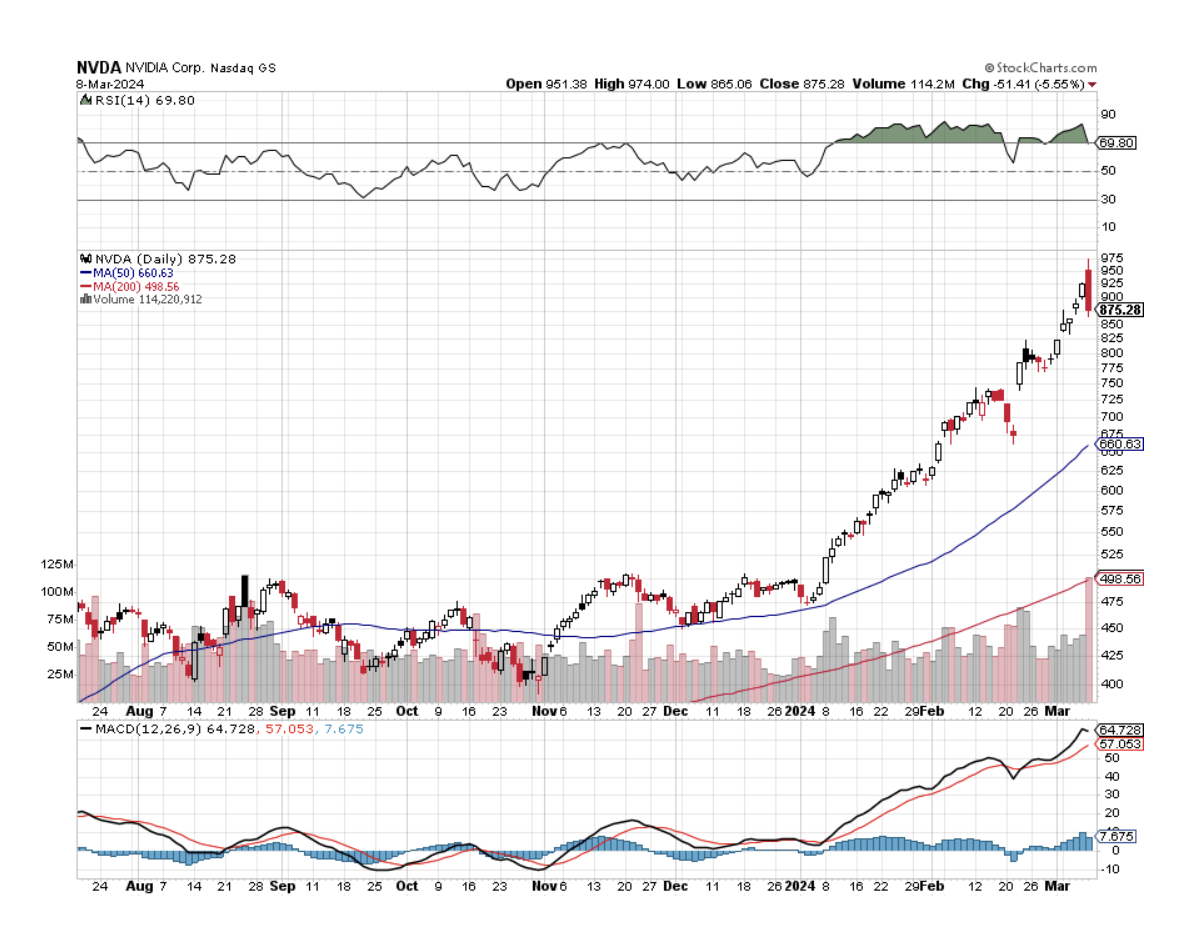
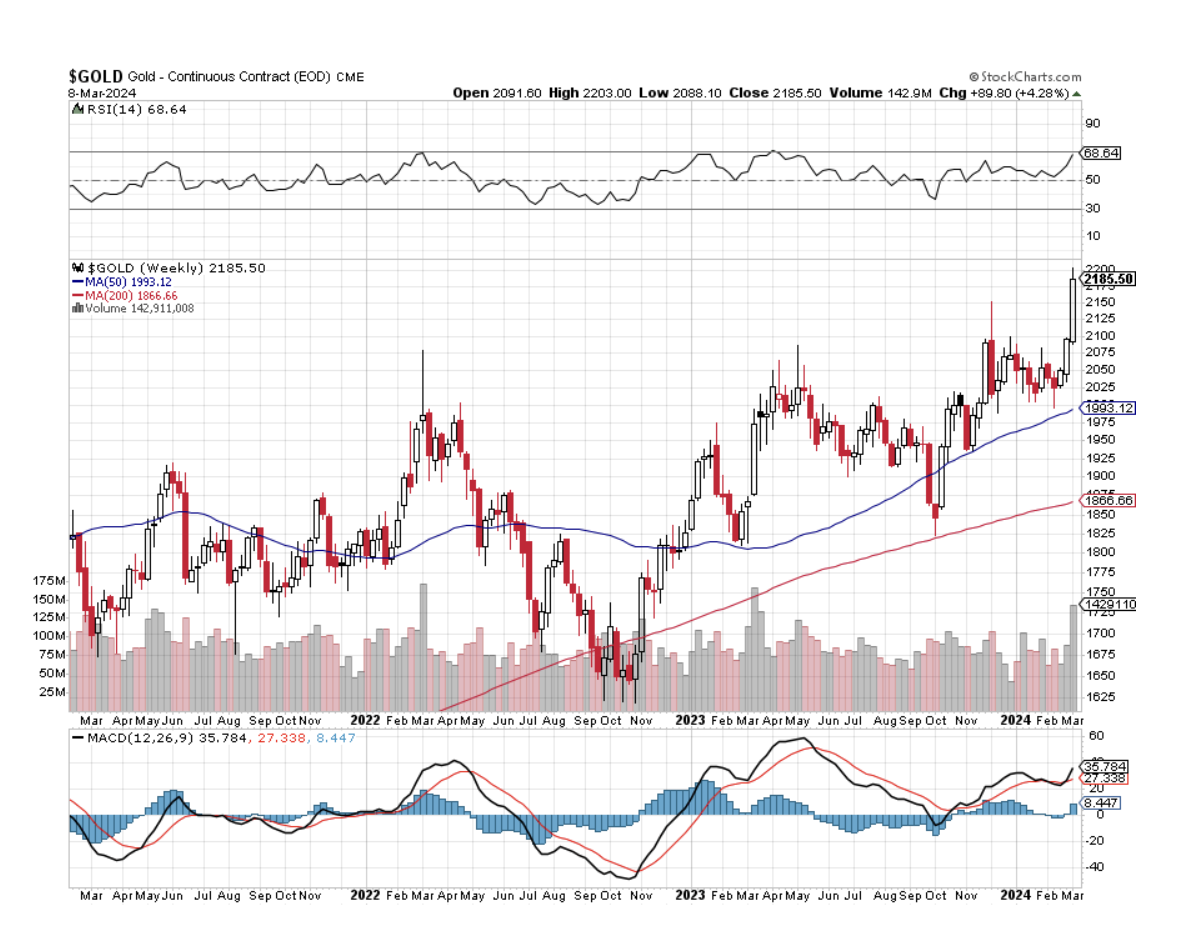
Global Market Comments
March 8, 2024
Fiat Lux
Featured Trade:
(MARCH 6 BIWEEKLY STRATEGY WEBINAR Q&A),
(SPX), (QQQ), (PANW), (SNOW), (NVDA), (GLD), (GOLD), (NEM), (BA), (AMZN), (TLT), (AAPL), (COIN)

Below please find subscribers’ Q&A for the March 6 Mad Hedge Fund Trader Global Strategy Webinar, broadcast from Silicon Valley, CA.
Q: With your projections of the Dow going to $240,000 in 10 years, would it be wise to invest in the Dow?
A: The Dow is just an indicator that everybody understands and is familiar with what the media uses. What I tell people to do is if you are not an aggressive person, put half your money in the S&P 500 (SPX), which is getting most of the gains, and half in the technology (QQQ), which is getting all of the gains. If you're an aggressive person, say in your twenties, thirties, or forties, then you put all of your money in the Invesco QQQ NASDAQ Trust (QQQ) because you'll live long enough to survive the inevitable downturns.
Q: What should we do now with Palo Alto Networks (PANW)?
A: Keep it. It’s a fantastic long-term company. This is a rare opportunity to get in on the long side, as this is a company that I think could double over the next 3 to 5 years. Hacking is never going out of style and now they have AI. The selloff was caused by a major platform upgrade which may cause profits to dip for a quarter. That’s now in the price.
Q: With the successful launch of Bitcoin, should we allocate 5% or 10% of our portfolio to Bitcoin?
A: Only if you can handle a 90% decline at any time without warning because that's exactly what it did in 2021. Calling it a store of value is a fantasy. You also still have big theft issues with Bitcoin. You don't have theft issues if you have all your money at Morgan Stanley, Goldman Sachs, Merrill Lynch, and so on, so there is a security issue (with Bitcoin). The only way to bypass the security issues is to have a hot wallet, and the only way to have a hot wallet is to be a computer programmer yourself or have a degree in computer science—so it's not for most people. If you can navigate all of that, then maybe; but again, nobody knows when the next 90% decline is going to come. By the way, if I can find stocks with Mad Hedge Fund Trader that go up faster than Bitcoin, I'd much rather own the stocks, because at least I know what they make.
Q: Is Snowflake (SNOW) a buy here at $155?
A: Absolutely. Another great cybersecurity database company. But if we drop to $155, we're going to stop out of the front month call spread and try to buy it back lower down.
Q: Do you think it's wise to sell the semiconductor stocks now and buy them back lower down, and pay the taxes?
A: Probably not. They are really the most volatile sector in the market. If you sell now, it's unlikely you'll be able to pick up the next bottom and get back in, and you have to pay the taxes. So it's probably better just to keep a core long-term position in the semis, especially Nvidia (NVDA); and if it drops 200 points, just buy more. That's what I'm doing. I'm keeping all of my Nvidia LEAPS. All my call spreads and short put positions are about to expire at max profit, and I even have a little bit of stock that I'm keeping. So I think Nvidia goes to $1,000 at one point and now, the forecast of $1,400 is out there. So as Nvidia goes, so goes the entire rest of the semiconductor industry.
Q: You're only 30% invested. Are you looking for a pullback, or are you just waiting for new opportunities to appear?
A: Yes and Yes. I'm waiting for a fantastic company to come up with conservative guidance, which these days means an immediate 20 to 25% sell-off. That is your entry point for these good companies. That's how we got into Palo Alto Networks (PANW), and that's how we got into Snowflake (SNOW). In an extremely overbought market, those are your only opportunities until the market generally sells off or until the domestic plays finally start to take off, and we got the first hints of that last week.
Q: What is your view on junior gold mining stocks?
A: They are a buy here, absolutely, but you get enough volatility in the majors that you don't need to bother with the minors—that's always been my view. Because minors go out of business, they close mines, they don't find gold. A lot of minors have stocks go up on the possibility of gold being found, whereas the majors like Barrick Gold (GOLD) and Newmont Mining (NEM) actually have the gold, and it's just an industrial process of mining it. You know the minors, the juniors, are extremely speculative and high-risk, and that's why most of them are listed in Canada. They can't get a US listing. So that's enough of a tell for me to stay away.
Q: I just realized I have the wrong expiration date on my Amazon (AMZN) spread. Should I exit immediately?
A: What I would do is exit what you have and then wait for another down day on Amazon, and then put it back on. That's the way to deal with that one. The answer to all mistakes is to exit immediately. That's an automatic rule at Morgan Stanley; if you don't do that, you get fired. Or come up with a new set of logic as to why you own this position, which has been done by more than a few traders, I imagine.
Q: Would you be willing to be a Boeing 737 Max passenger right now or ever?
A: Yes! If you don't fly Boeings (BA), your life is suddenly very narrow and limited because you’re stuck on the ground. Boeing is the biggest-selling airplane in the world, and most fleets are made of Boeings. However, I'm a pilot, so if anything goes wrong I can run up front and take control, or at least tell the pilot what to do. I also have 25 parachute jumps, if they're handing those out in first class. So remember, every airplane without engines is a glider and I can land a glider anywhere. The company has major problems to sort out until it becomes a “BUY”.
Q: I cannot get into the (TLT) trade to save my life. Is the (TLT) April $89-$92 vertical bull call debit spread pushing the risk limits?
A: Yes. I would walk away from the trade and wait for a better entry point rather than chase. The whole fixed-income space has flipped from the bid side to the offered side, meaning we've gone from net sellers to net buyers. All asset classes have done that; you're seeing that in gold, silver, and even uranium. All the REITs are having a fantastic week. All interest rate plays are now being bid, and it's hard to buy stuff when things are being bid.
Q: What's it like being 6’4” and living in Japan?
A: Well, I did knock myself out a couple of times, banging myself on the door. You get used to bowing a lot, but bowing is a part of the culture in Japan. If you're watching the new Hulu miniseries, Shogun, you would know that. Once I was working for Sony and I was late for work, so I was running up the stairs, and they had a steel lintel to their door, and I just ran bang into that and knocked myself out. The Sony people thought, “Oh my gosh, we just killed a foreigner!” So yes, it was hard. The only clothes I could buy in Japan for ten years were belts and ties. I had to fly to Hong Kong and had everything else custom-made in those days.
Q: What's your opinion of Masters of the Air?
A: I absolutely love it. It's heartbreaking to watch. I knew a lot of guys who were there, and I was one of the last people trained on how to fly a Boeing B-17 Flying Fortress. Anybody who watched Masters of the Air with me gets to watch it with someone who is one of the last living people who rated on a B-17 as a pilot.
Q: Are we in a liquidity bubble right now?
A: Yes, we are, and boy, I love every minute of it. But we're not in the year 2000 in a liquidity bubble, we're in 1995 just getting started. And the profits from AI are just getting started which is what's creating this endless liquidity that people are seeing now.
Q: What should I buy the dip in Tesla (TSLA)?
A: There's no downside target for Tesla right now. We just have to wait for the meltdown in demand to finish, and who knows where that is. But with BYD entering the market, Tesla is definitely going to get more competition in emerging markets—that's where BYD is selling the cars now. I also understand they're selling them in Australia.
Q: How much longer can tech stocks keep rising?
A: 5 to 10 more years, but we are way overdue for some kind of pullback.
Q: What are your thoughts on Apple's (APPL) weakness?
A: Apple has become that great backward-looking company. It could drop to $160 or even $140, then we’ll be taking a serious look at some call spreads and LEAPS. You just wait. In four months when they announce their next batch of new products suddenly, they’ll become an AI company and recover the $200 level in no time.
Q: Should I dive into Coinbase (COIN)?
A: Absolutely not on pain of death! It's made its move. You're better off buying Nvidia (NVDA) at that kind of inclination because at least you know what they make.
To watch a replay of this webinar with all the charts, bells, whistles, and classic rock music, just log in to www.madhedgefundtrader.com, go to MY ACCOUNT, select your subscription (GLOBAL TRADING DISPATCH, TECHNOLOGY LETTER, or Jacquie's Post), then WEBINARS, and all the webinars from the last 12 years are there in all their glory.
Good Luck and Stay Healthy,
John Thomas
CEO & Publisher
The Diary of a Mad Hedge Fund Trader

Thank You NVIDIA!
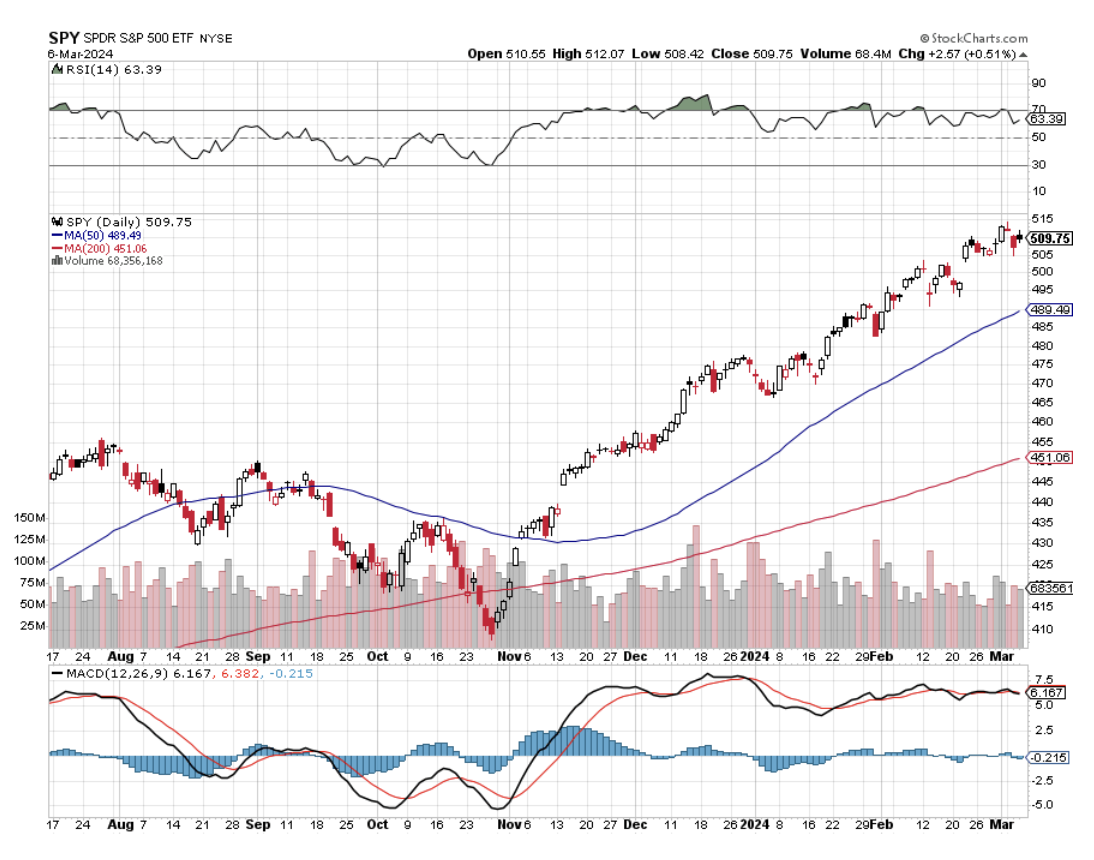
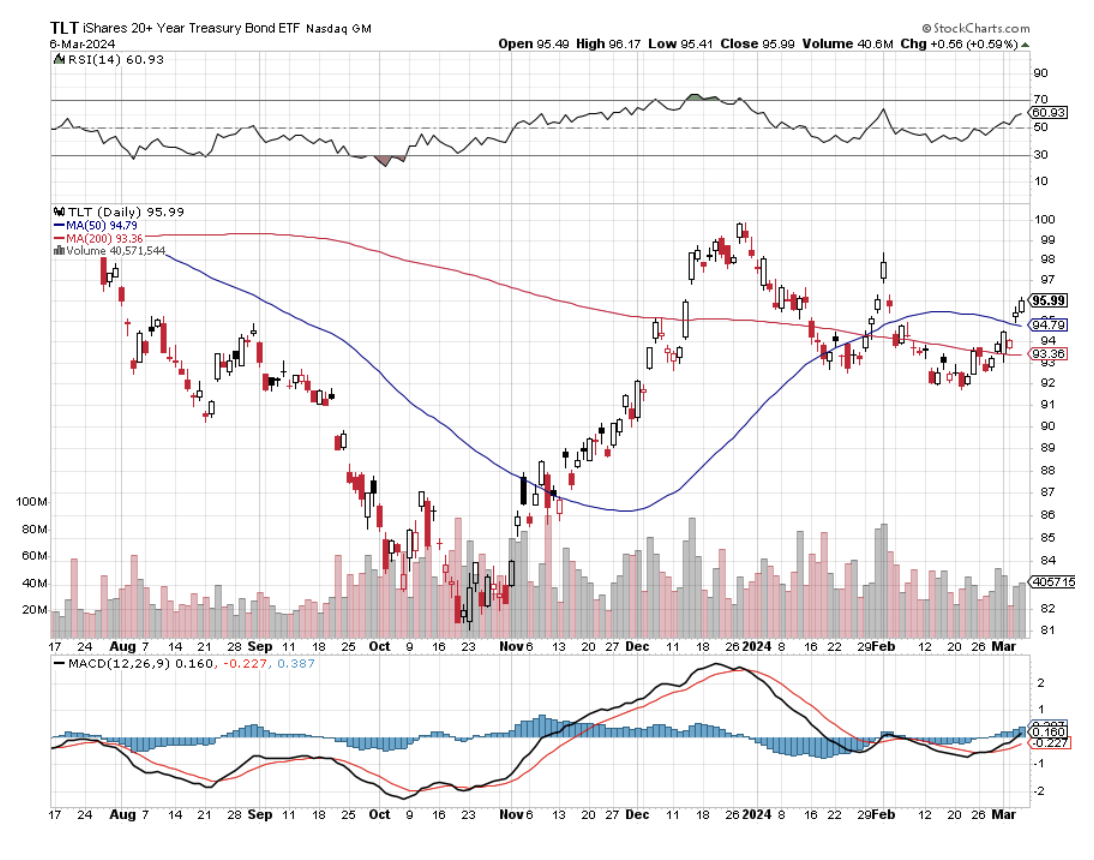
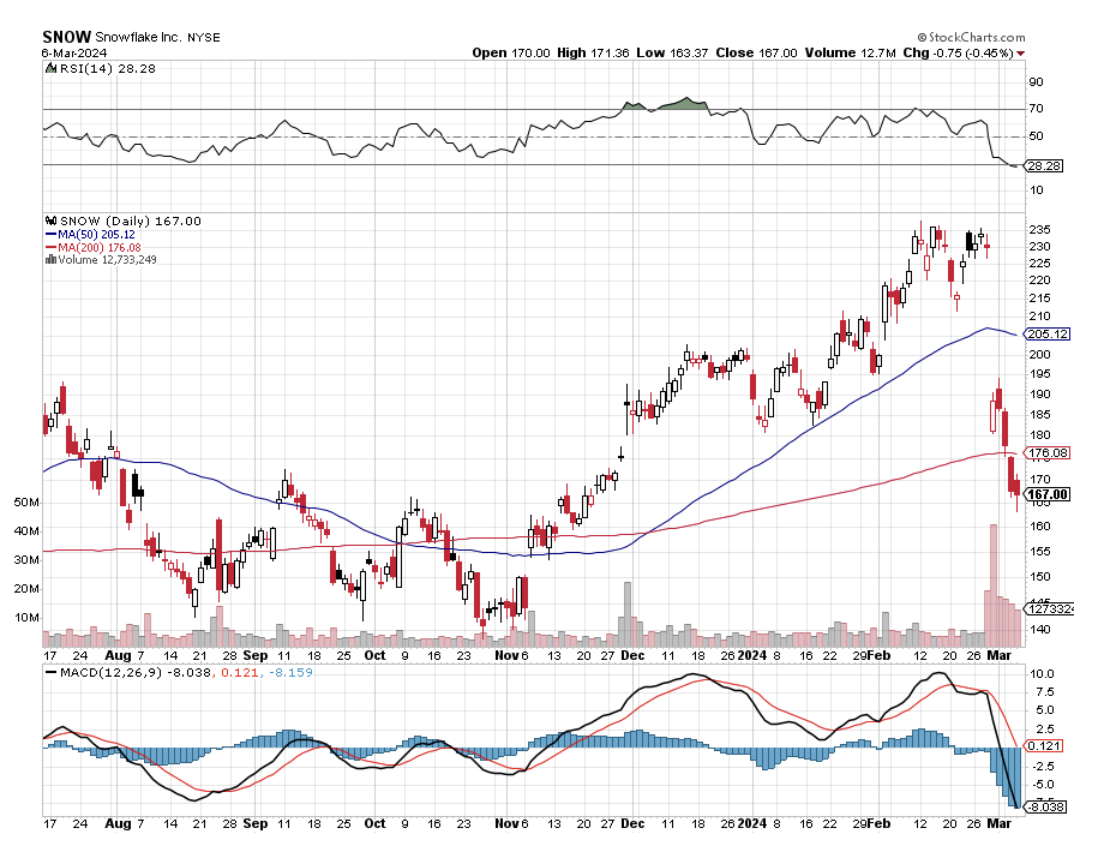
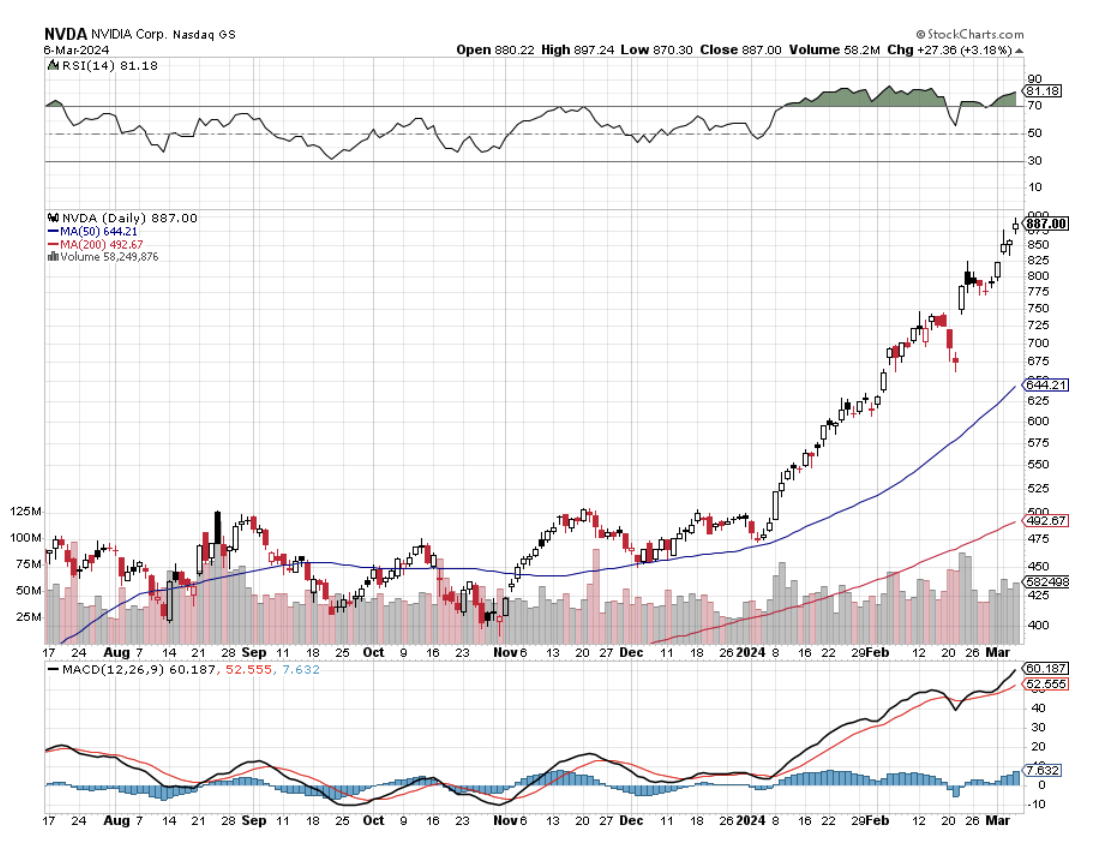
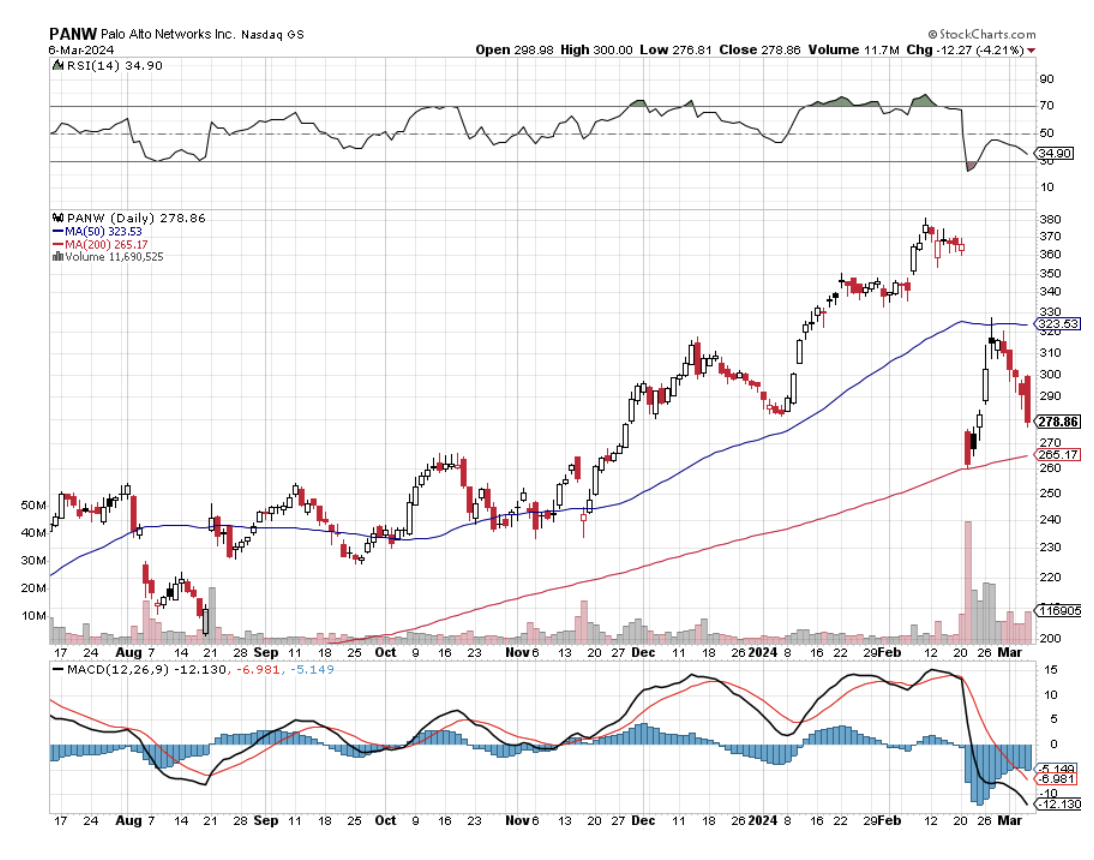
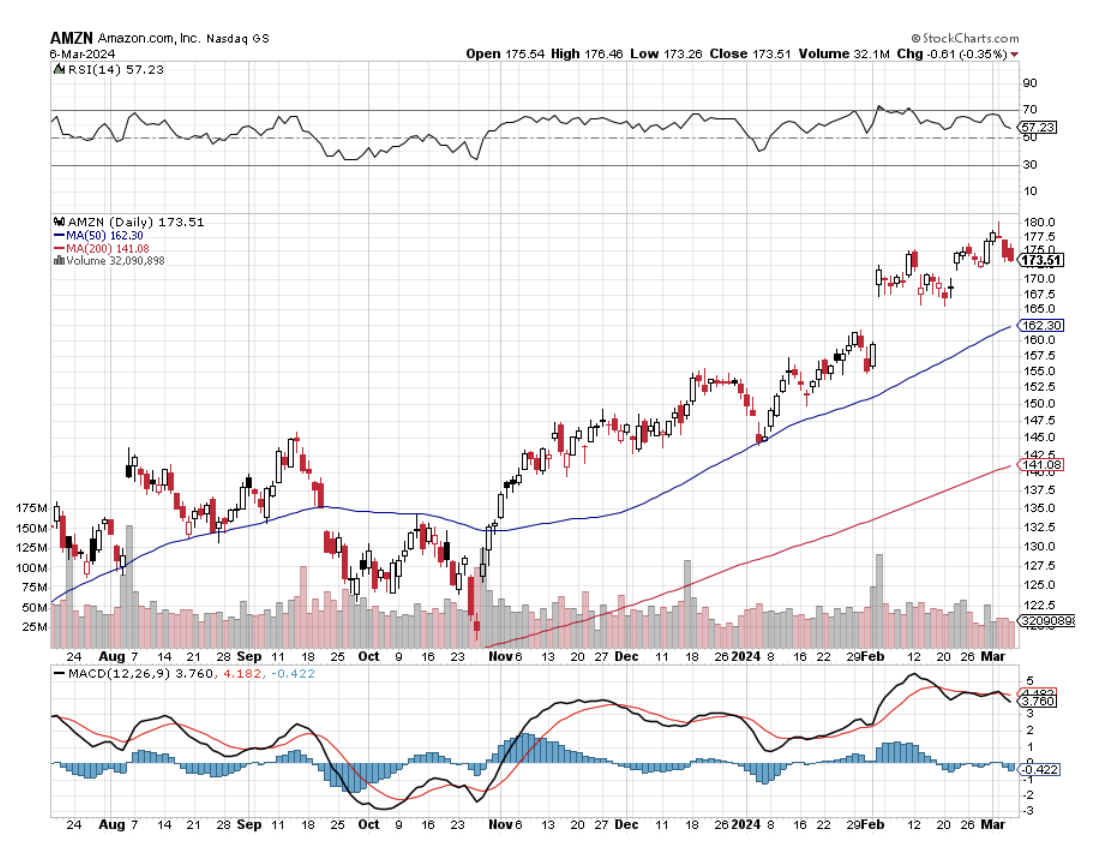
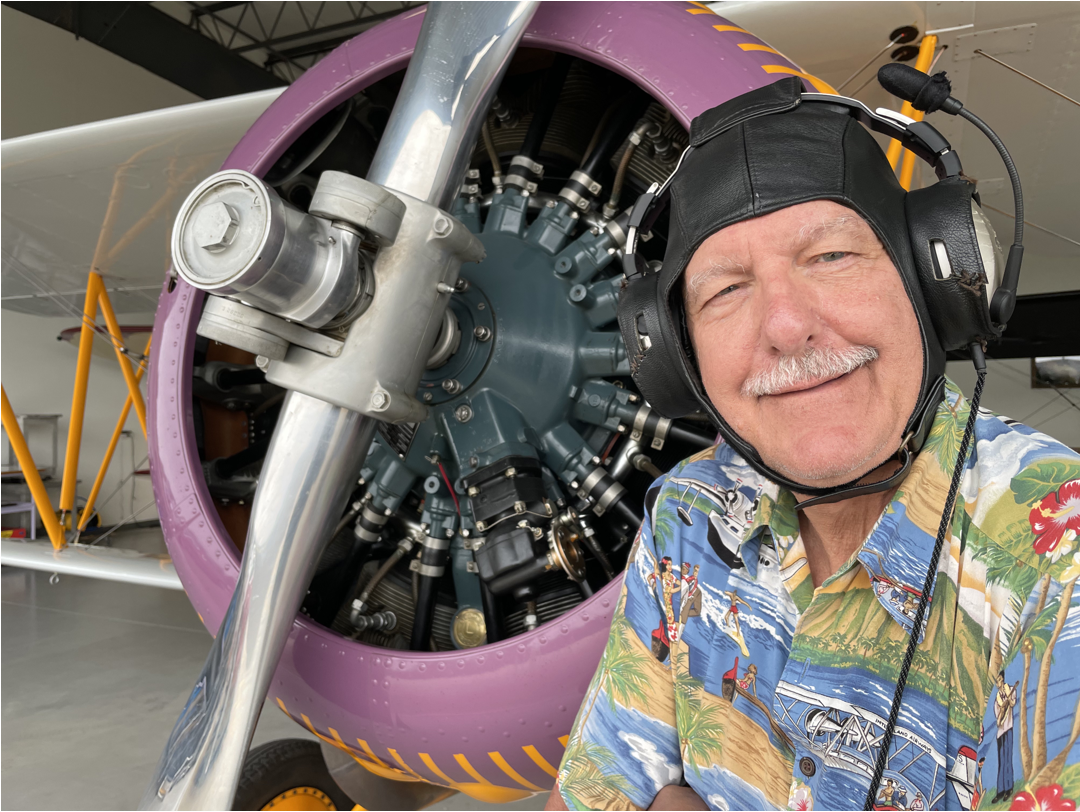
Global Market Comments
March 4, 2024
Fiat Lux
(MARKET OUTLOOK FOR THE WEEK AHEAD, or WHO NEEDS THE FED?
(AAPL), (TSLA), (AAPL), (GOOGL), (MSFT), (MSFT), (BRK/B), (BA), (JPM), (BA), (C), (SNOW), (NVDA)

I have to tell you that this has been a really good week to be John Thomas.
The accolades have been pouring in. During February, my followers have made the most money in their lives, including myself. NVIDIA (NVDA), up 110% in four months, is now the largest position in everyone’s portfolios, if not because of my prodding, then through capital appreciation alone.
Institutions limited to keeping single holdings to 5% or 10% got away with delaying their rebalancing as long as possible.
Is it 1995 for 2,000? I vote for the former, meaning that the current melt-up could have five more years to run with occasional breaks.
Exploding corporate profits and rocketing share capitalizations have replaced the Federal Reserve as a new endless source of liquidity, as I knew it would.
Who needs the Fed? Who needs interest rate cuts?
Best of all, this new source of super liquidity isn’t at the whim of a single man, nor subject to politics of any kind. It has in fact become its own self-fulfilling prophecy.
Dow 240,000 here we come, as I have been endlessly repeating for years!
It says a lot that hedge funds, the “smart money,” are heavily overweight the Magnificent Seven, while retail mutual funds, the “dumb money” are underweight. The technology they are overweight is mostly in Apple, that great backward-looking company. This implies that to catch up mutual funds are going to have to buy hundreds of billions of Mag Seven stocks and sell their Apple to pay for the move.
The largest single source of demand for stocks will be the $1.25 trillion in corporate buybacks. What will they buy? Apple (AAPL), Alphabet (GOOGL), and Microsoft (MSFT), the three largest purchasers of their own stocks.
When the leader of the fastest-growing, best-performing company with the top-performing stock speaks, you have to pay attention. The next $1 trillion build-out in AI infrastructure is here, says NVIDIA CEO Jensen Huang, now one of the richest men in the world.
Have a good week! I’ll be spending my time shoveling snow.
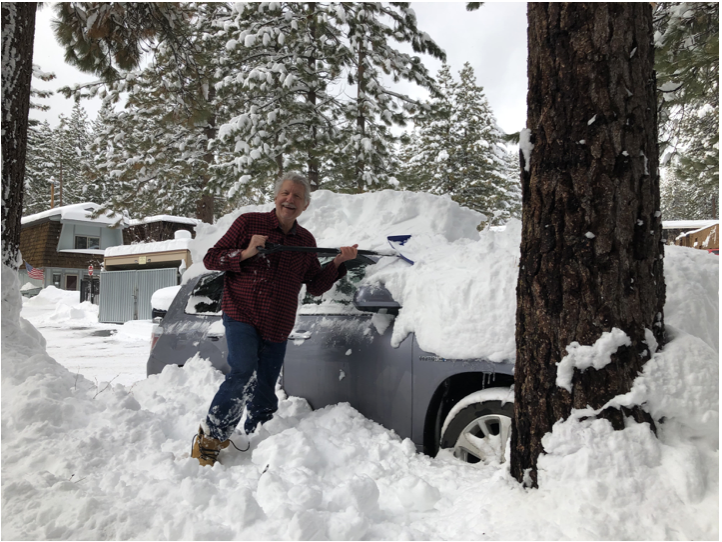
In February, we closed up +7.42%. My 2024 year-to-date performance is at +3.14%. The S&P 500 (SPY) is up +7.33% so far in 2024. My trailing one-year return reached +55.73% versus +42.04% for the S&P 500.
That brings my 15-year total return to +679.77%. My average annualized return has recovered to +51.30%.
Some 63 of my 70 trades last year were profitable in 2023. Some 9 of 13 trades have been profitable so far in 2024.
I used the ballistic move-in (NVDA) to take profits in my double long there. I am maintaining a single long in (AMZN) and Snowflake (SNOW) and am 80% in cash given the elevated level of the markets.
Core PCE Comes in Cool, at 2.8%, as expected. The personal consumption expenditures price index excluding food and energy costs increased 0.4% for the month and 2.8% from a year ago, as expected. Stocks and bonds liked it, but the US dollar hated it.
Snowflake Crashes, down 20%, on weak guidance. CEO Frank Slootman is retiring. This is the third company he has taken public and it’s time to retire. He will stay on as chairman. This is one of the best cloud plays out there, and now you have a chance to buy it close to the October bottom. Buy (SNOW) on dips.
Weekly Jobless Claims Pop, up 13,000 to 215,000. However, continuing claims, which run a week behind, rose to just above 1.9 million, a gain of 45,000 and higher than the FactSet estimate of 1.88 million.
Apple Pulls the Plug on EV Project, wrong product at the wrong time. AI is where the action is. We may have to wait until the summer for this company when it starts to discount the next-generation iPhone release in the fall. Tesla can now sleep easy. Avoid (AAPL) and buy (TSLA) on dips.
Berkshire Hathaway to Top $1 Trillion in a Year, up from the current $900 billion, according to UBS analyst Brian Meredith. I think that’s a low target. Buy (BRK/B) on dips.
Boeing Hit by Damning Report, faulting the company for ineffective procedures and a breakdown in communications between senior management and other members of staff, according to an FAA report. The report is the latest to find fault with safety at Boeing, which suffered its latest blow when a panel covering an unused door flew off during an Alaska Airlines flight on Jan. 5. Buy (BA) on dips.
Warren Buffet Says Their Nothing to Buy, in his annual letter to shareholders. The few targets left are few and far between and heavily picked over. (BRK/B) has also lost the advice of its principal mentor, Charlie Munger at the age of 99. Last year Berkshire acquired Dairy Queen and Berkshire Energy. But with $905 billion in assets, those will hardly move the needle on his incredible track record. The 93-year-old Buffet has outperformed the S&P 500 by 141:1 since 1964.
CEO Jamie Diamond Sell $150 Million in (JPM) Shares, cashing in on the historic “BUY” he had at the 2009 market bottom. He earned a 36X gain on that trade. (JPM) remains the “must-own” bank for most institutional investors.
New Home Sales Weaken, curbed by frigid weather, but demand for new construction remains underpinned by a persistent shortage of previously owned homes. New home sales increased 1.5% to a seasonally adjusted annual rate of 661,000 units in January. Economists had forecast new home sales rising to a rate of 680,000 units.
Another Regional Bank is in Trouble. Commercial real estate lender New York Community Bancorp said it discovered “material weaknesses” in how it tracks loan risks, wrote down the value of companies acquired years ago, and replaced its leadership to grapple with the turmoil. The stock plunged. Expect this to be a recurring problem. The US banking system is in the process of consolidating from 4,236 banks to six. Buy (JPM), (BA), and (C) on dips.
Millennials are Becoming the Richest Generation in History. The so-called greatest generation — those typically born from 1928 to 1945 — and baby boomers — born between 1946 and 1964 — will hand over the reins to those born from 1981 to 1996 when they pass on their property- and equity-rich assets. In the U.S. alone, the shift would see $90 trillion of assets move between generations.
My Ten-Year View
When we come out the other side of the recession, we will be perfectly poised to launch into my new American Golden Age or the next Roaring Twenties. The economy decarbonizing and technology hyper accelerating, creating enormous investment opportunities. The Dow Average will rise by 800% to 240,000 or more in the coming decade. The new America will be far more efficient and profitable than the old.
Dow 240,000 here we come!
On Monday, March 4, nothing of note is announced.
On Tuesday, March 5 at 8:30 AM EST, ISM Services are released.
On Wednesday, March 6 at 2:00 PM, the Jolts Job Openings Report is published
On Thursday, March 7 at 8:30 AM, the Weekly Jobless Claims are announced.
On Friday, March 8 at 2:30 PM, the Nonfarm Payroll Report for February is published. At 2:00 PM the Baker Hughes Rig Count is printed.
As for me, I’ve found a new series on Amazon Prime called 1883. It is definitely NOT PG rated, nor is it for the faint of heart. But it does remind me of my own cowboy days.
When General Custer was slaughtered during his last stand at the Little Big Horn in 1876 in Montana, my ancestors spotted a great buying opportunity. They used the ensuing panic to pick up 50,000 acres near the Wyoming border for ten cents an acre.
Growing up as the oldest of seven kids, my parents never missed an opportunity to farm me out with relatives. That’s how I ended up with my cousins near Broadus, Montana for the summer of 1966.
When I got off the Greyhound bus in nearby Sheridan, I went into a bar to call my uncle. The bartender asked his name and when I told him “Carlat” he gave me a strange look.
It turned out that my uncle had killed someone in a gunfight in the street out front a few months earlier, which was later ruled self-defense. It was the last public gunfight seen in the state, and my uncle hasn’t been seen in town since.
I was later picked up in a beat-up Ford truck and driven for two hours down a dirt road to a log cabin. There was no electricity, just kerosene lanterns, and a propane-powered refrigerator.
Welcome to the 19th century!
I was hired as a cowboy, lived in a bunk house with the rest of the ranch hands, and was paid the pricely sum of a dollar an hour. I became popular by reading the other cowboys' newspapers and their mail since they were all illiterate. Every three days we slaughtered a cow to feed everyone on the ranch. I ate steak for breakfast, lunch, and dinner.
On weekends, my cousins and I searched for Indian arrowheads on horseback, which we found by the shoe box full. Occasionally we got lucky finding an old rusted Winchester or Colt revolver just lying out on the range, a remnant of the famous battle 90 years before. I carried my own six-shooter to help reduce the local rattlesnake population.
I really learned the meaning of work and developed callouses on my hands in no time. I had to rescue cows trapped in the mud (stick a burr under their tail and make them mad), round up lost ones, and sawed miles of fence posts. When it came time to artificially inseminate the cows with superior semen imported from Scotland, it was my job to hold them still. It was all heady stuff for a 15-year-old.
The highlight of the summer was participating in the Sheridan Rodeo. With my uncle being one of the largest cattle owners in the area, I had my pick of events. So, I ended up racing a chariot made from an old oil drum, team roping (I had to pull the cow down to the ground), and riding a Brahman bull. I still have a scar on my left elbow from where a bull slashed me, the horn pigment clearly visible.
I hated to leave when I had to go home and back to school. But I did hear that the winters in Montana are pretty tough.
It was later discovered that the entire 50,000 acres was sitting on a giant coal seam 50 feet thick. You just knocked off the topsoil and backed up the truck. My cousins became millionaires. They built a modern four-bedroom house closer to town with every amenity, even a big-screen TV. My cousin also built a massive vintage car collection.
During the 2000s, their well water was poisoned by a neighbor’s fracking for natural gas, and water had to be hauled in by truck at great expense. In the end, my cousin was killed when the engine of the classic car he was restoring fell on top of him when the rafter above him snapped.
It all gave me a window into a lifestyle that was then fading fast. It’s an experience I’ll never forget.

Good Luck and Good Trading,
John Thomas
CEO & Publisher
The Diary of a Mad Hedge Fund Trader
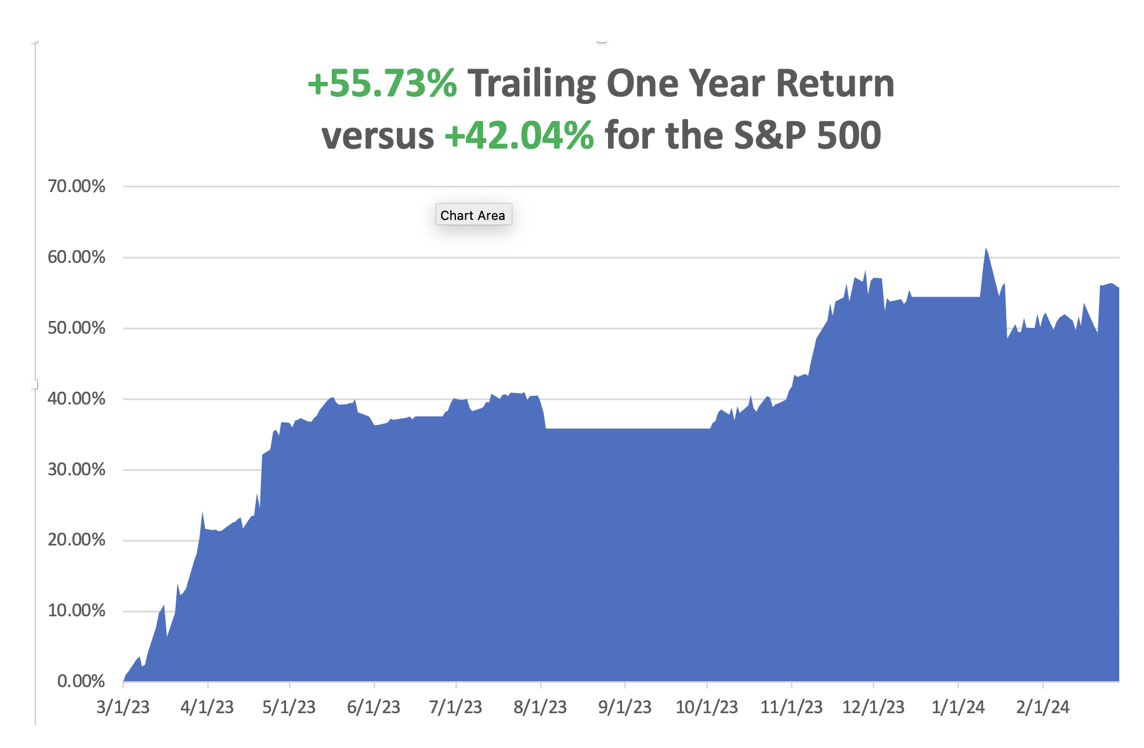


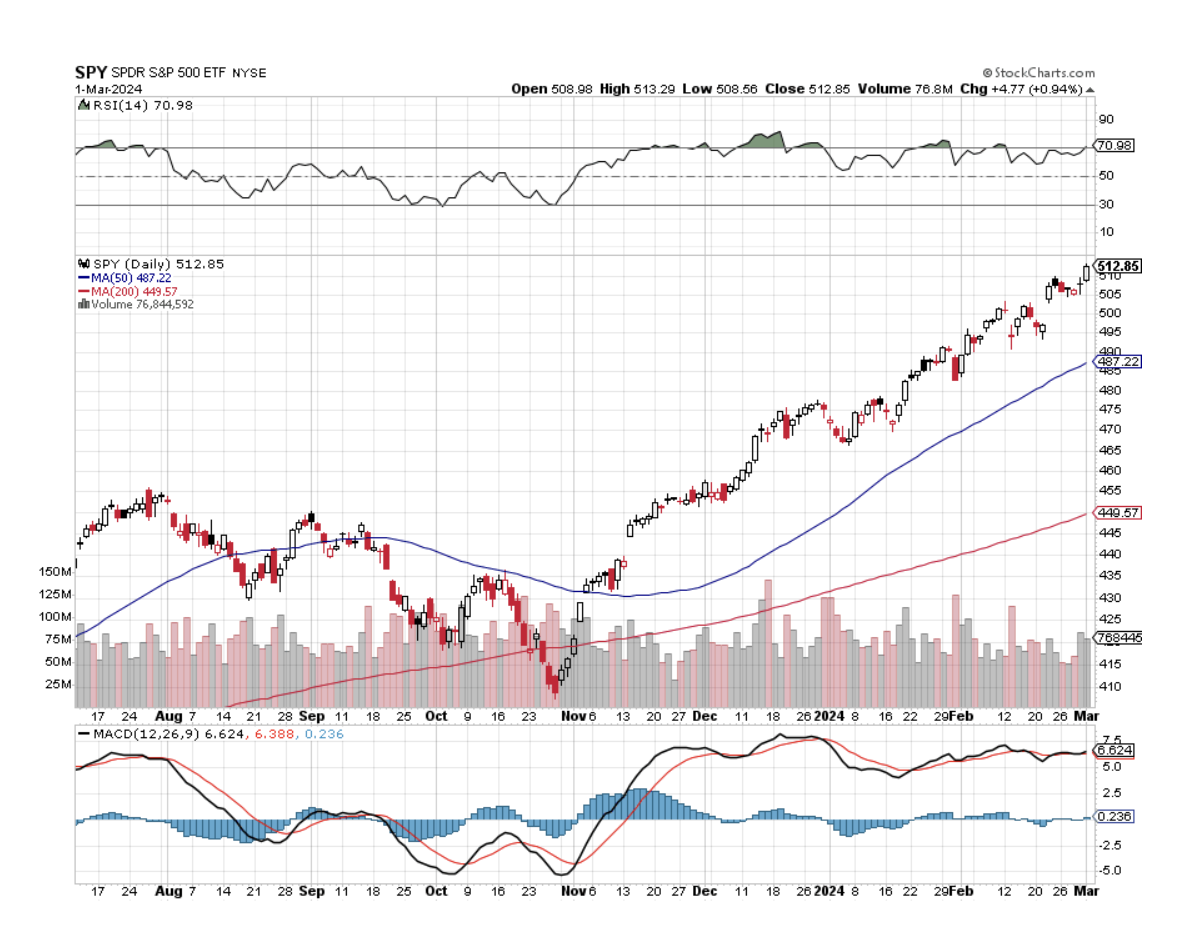
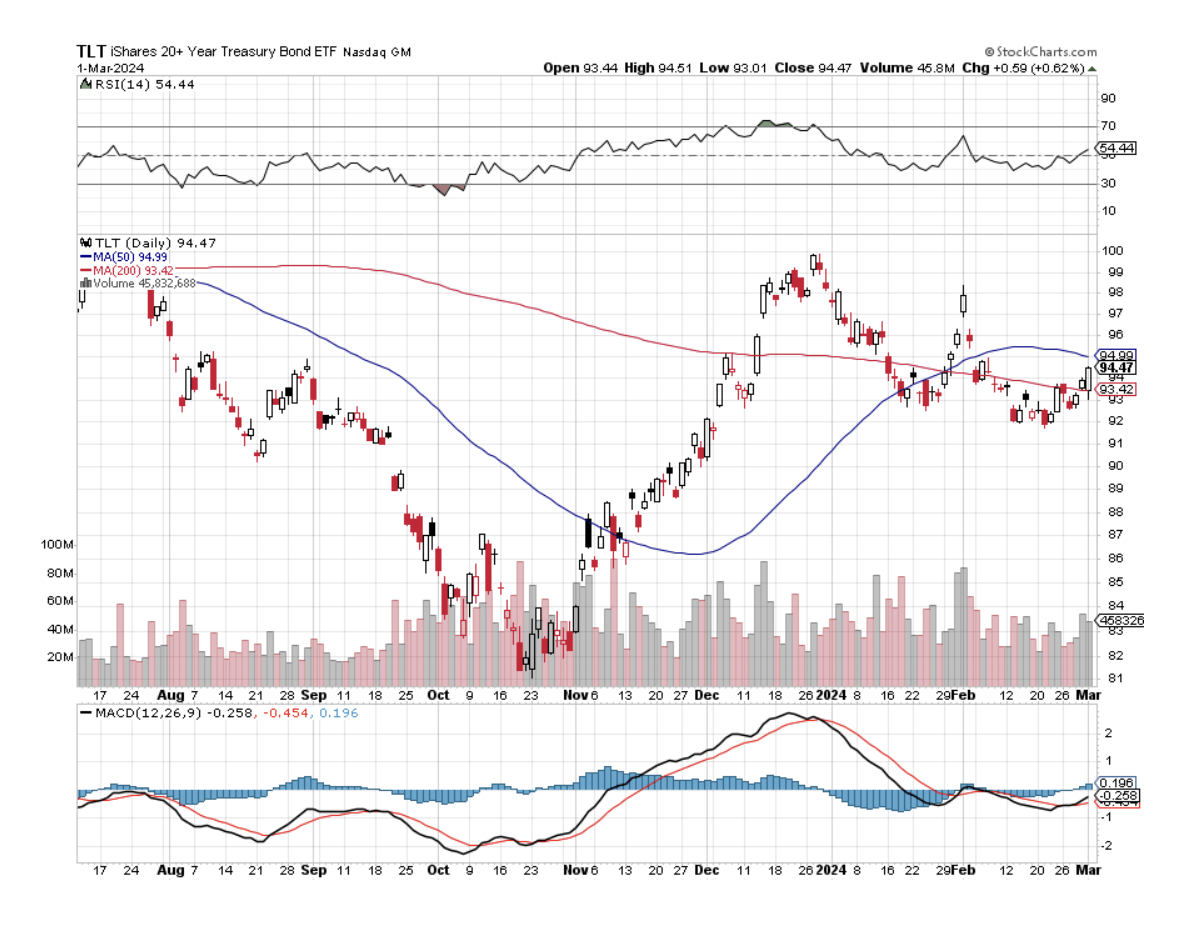
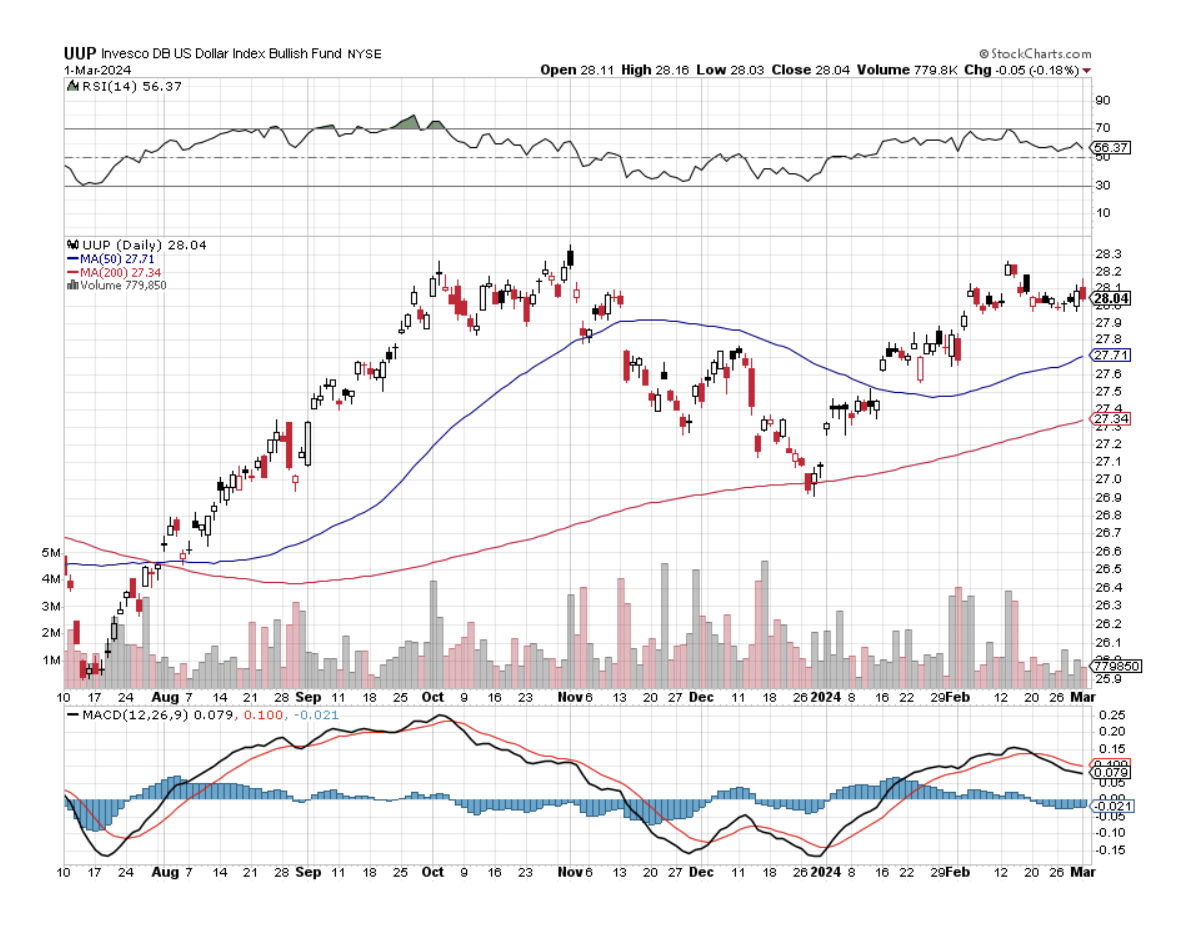
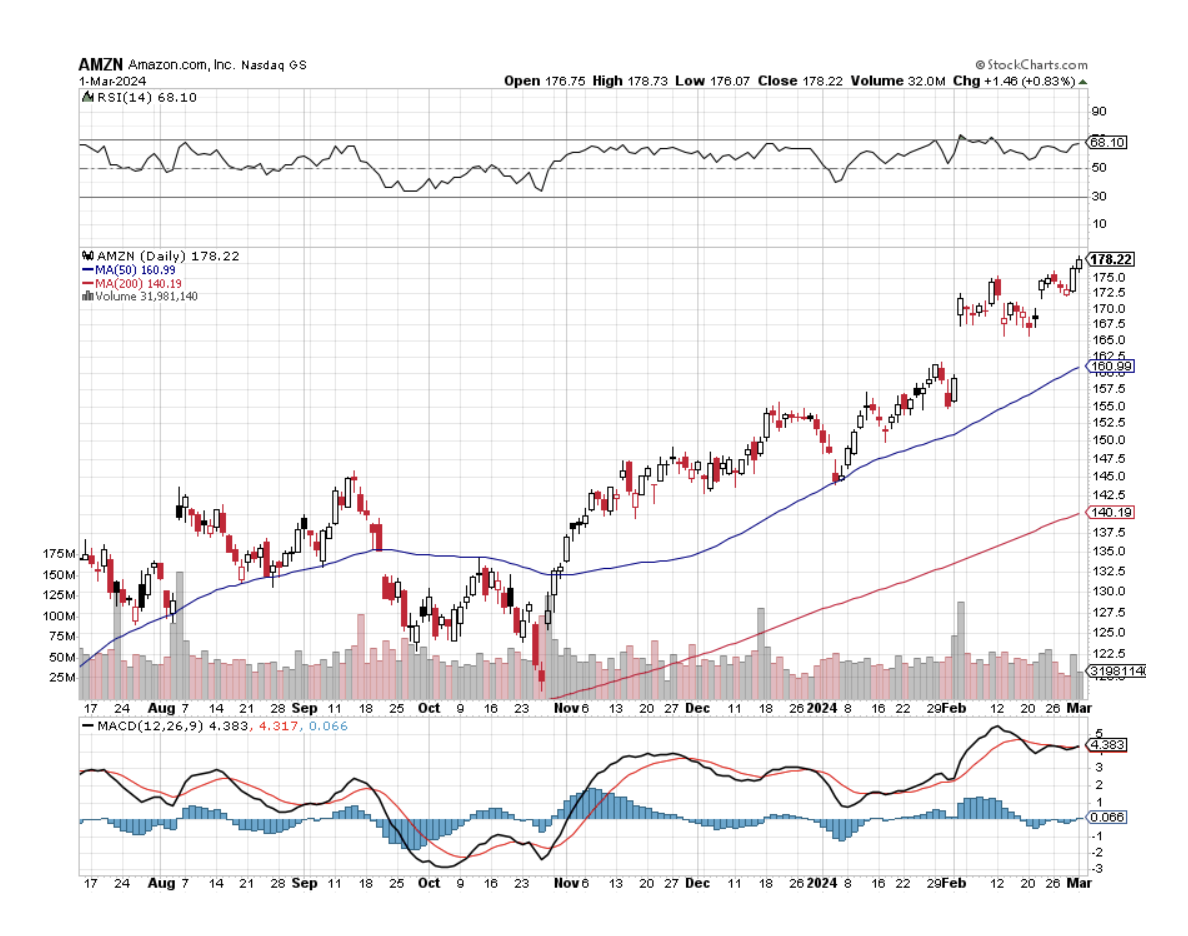
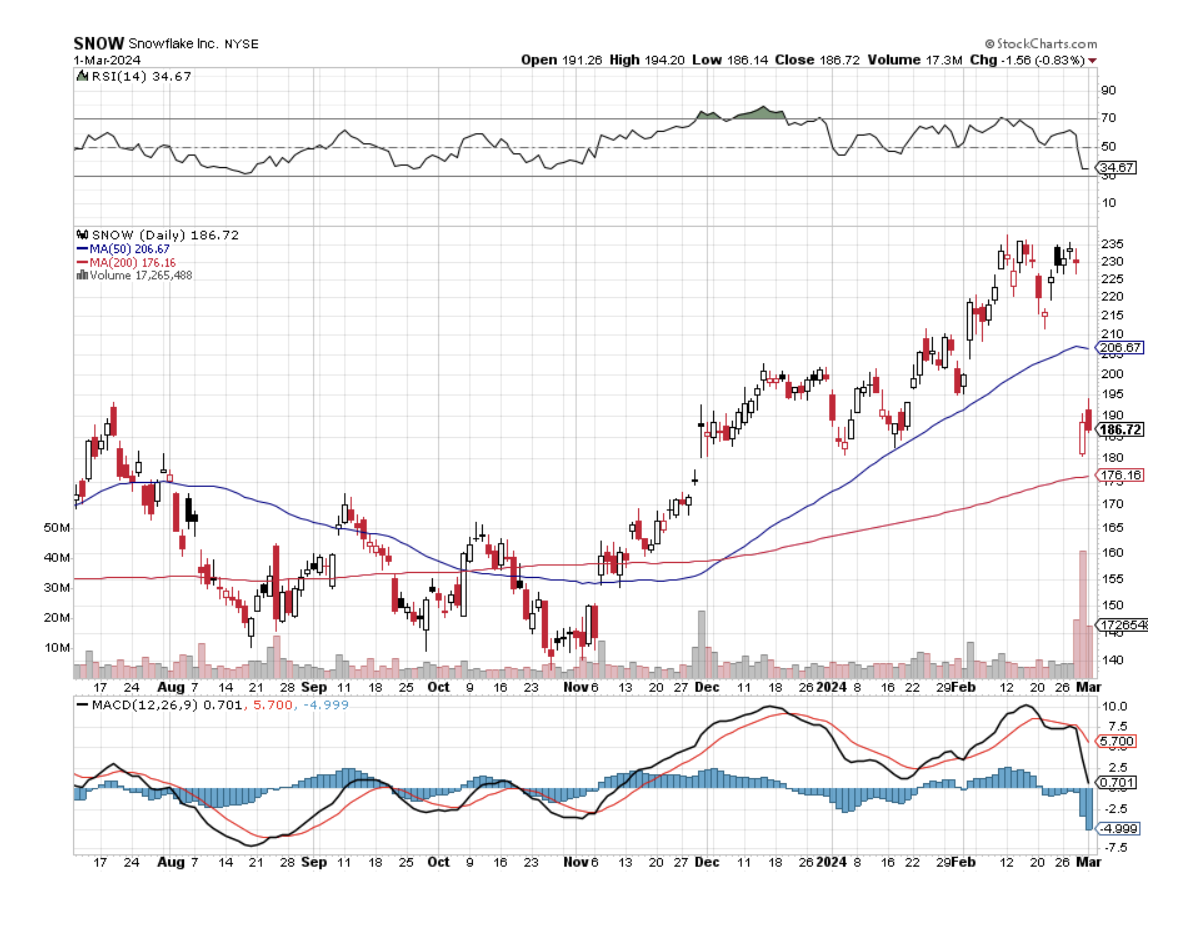
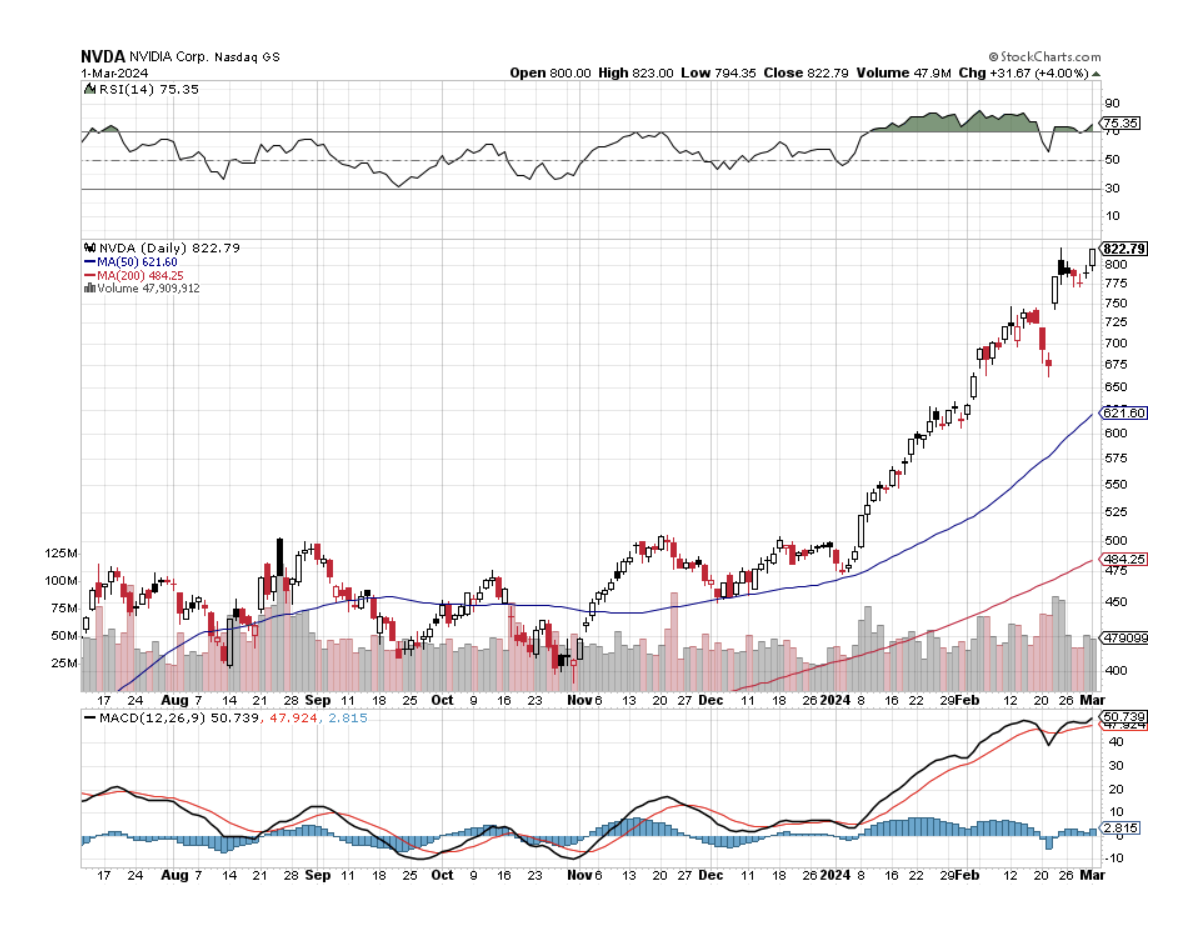
Legal Disclaimer
There is a very high degree of risk involved in trading. Past results are not indicative of future returns. MadHedgeFundTrader.com and all individuals affiliated with this site assume no responsibilities for your trading and investment results. The indicators, strategies, columns, articles and all other features are for educational purposes only and should not be construed as investment advice. Information for futures trading observations are obtained from sources believed to be reliable, but we do not warrant its completeness or accuracy, or warrant any results from the use of the information. Your use of the trading observations is entirely at your own risk and it is your sole responsibility to evaluate the accuracy, completeness and usefulness of the information. You must assess the risk of any trade with your broker and make your own independent decisions regarding any securities mentioned herein. Affiliates of MadHedgeFundTrader.com may have a position or effect transactions in the securities described herein (or options thereon) and/or otherwise employ trading strategies that may be consistent or inconsistent with the provided strategies.
This site uses cookies. By continuing to browse the site, you are agreeing to our use of cookies.
OKLearn moreWe may request cookies to be set on your device. We use cookies to let us know when you visit our websites, how you interact with us, to enrich your user experience, and to customize your relationship with our website.
Click on the different category headings to find out more. You can also change some of your preferences. Note that blocking some types of cookies may impact your experience on our websites and the services we are able to offer.
These cookies are strictly necessary to provide you with services available through our website and to use some of its features.
Because these cookies are strictly necessary to deliver the website, refuseing them will have impact how our site functions. You always can block or delete cookies by changing your browser settings and force blocking all cookies on this website. But this will always prompt you to accept/refuse cookies when revisiting our site.
We fully respect if you want to refuse cookies but to avoid asking you again and again kindly allow us to store a cookie for that. You are free to opt out any time or opt in for other cookies to get a better experience. If you refuse cookies we will remove all set cookies in our domain.
We provide you with a list of stored cookies on your computer in our domain so you can check what we stored. Due to security reasons we are not able to show or modify cookies from other domains. You can check these in your browser security settings.
These cookies collect information that is used either in aggregate form to help us understand how our website is being used or how effective our marketing campaigns are, or to help us customize our website and application for you in order to enhance your experience.
If you do not want that we track your visist to our site you can disable tracking in your browser here:
We also use different external services like Google Webfonts, Google Maps, and external Video providers. Since these providers may collect personal data like your IP address we allow you to block them here. Please be aware that this might heavily reduce the functionality and appearance of our site. Changes will take effect once you reload the page.
Google Webfont Settings:
Google Map Settings:
Vimeo and Youtube video embeds:
